6/15/1952
Norbert and Walter Meyer Buy Their Father’s Jazz Club
Brothers Norbert and Walter Meyer purchase their father’s “Soldier Meyer’s Brooklyn Bop House” jazz club. 1
They rename it to “Norby & Walter’s Bel-Air.”
The club’s origin story asserts that the ampersand between Norby and Walter did not work on the neon sign for the new nightclub so it became known as “Norby Walters Bel-Air.”
Soon after, Norbert Meyer changed his name to Norby Walters and Walter Meyer changed his name to Walter Walters.
1/15/1966
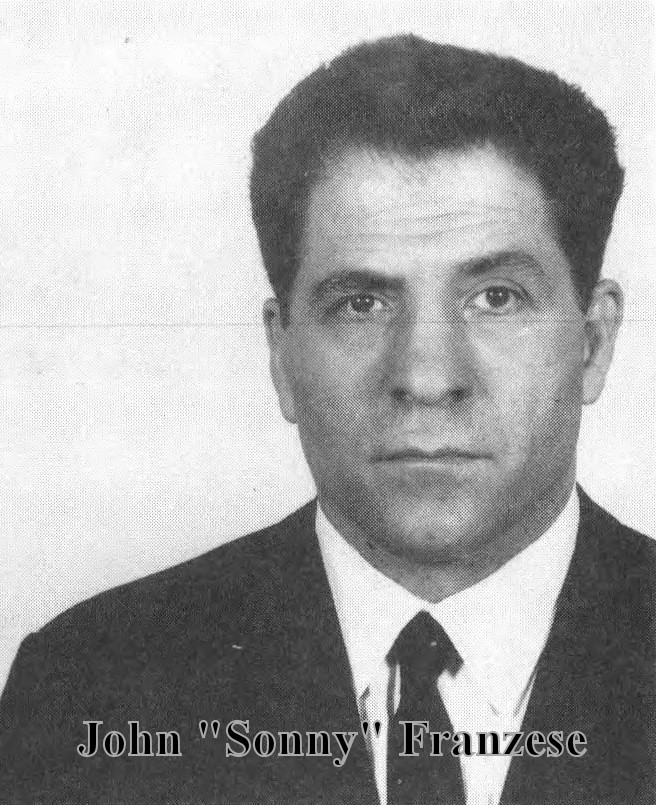
Norby and Walter Walters Open Nightclub
Norby and Walter Walters open “Norby Walters’ Supper Club” on East 60th Street in New York City, next door to the Copacabana. 2
The club became the unofficial headquarters of the Colombo mafia family crew headed by capo John “Sonny” Franzese.
Sonny Franzese was a partner in the “Norby Walters Supper Club.” 3
The two families socialized and once vacationed together. 4 5 6
“Norby Walters was ‘with’ Sonny Franzese. When a businessman is ‘with’ someone, it
means he has a godfather, a gladiator who will protect him from anyone looking to move in on his business and into his pocket. Norby was Sonny’s guy, an associate of the Colombo
family, and that status made him “hands off” to anyone on the street. For this backup, Norby passed on a piece of the action to the Colombo family.” 7
7/20/1967
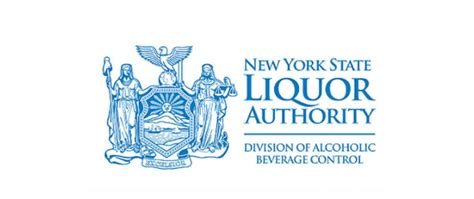
Walters Nightclub Prostitution
“Sometime after midnight, [licensee’s maitre d’ William] Rockwell introduced [Patrolman] Gray to one Michele Pagan who after being assured by Rockwell that there was nothing wrong with Gray and after so assuring herself went with him from the bar to a table in the rear after first giving her handbag to the bartender for safekeeping .
At the table, Gray purchased two rounds of alcoholic beverages for himself and the girl on credit using a credit card . At the table, Gray was solicited for purposes of prostitution, the girl suggesting that he obtain a room at the hotel, after first giving him a thorough “toss”, i.e., a search designed to ascertain if he were carrying a gun and thus was a policeman, and after telling him that she would not do any kissing around his private parts.
Subsequently, the girl was convicted in Criminal Court on her plea of guilty of offering to commit prostitution.
Upon such findings, I conclude that the premises did become disorderly as charged.” 8
As a result of these violations, Walters’ nightclub lost its liquor license and closed.
Consequently, Norby Walters started his entertainment agent business. 9
7/15/1972
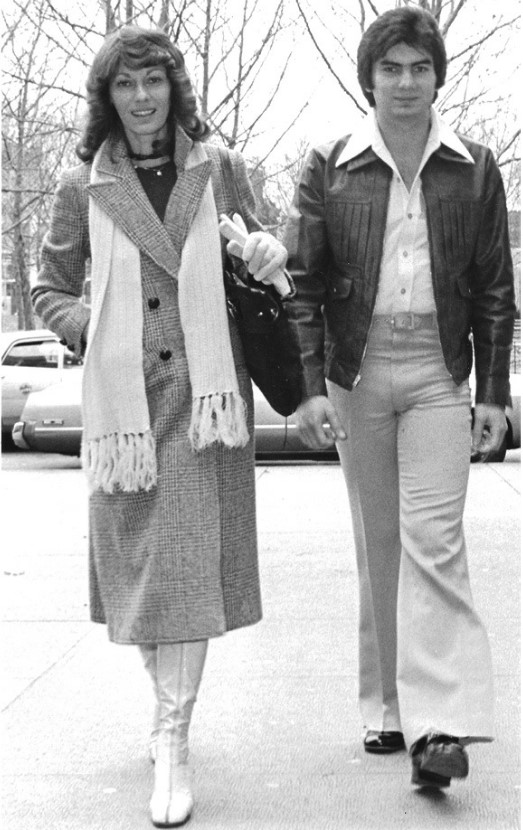
Michael Franzese Quits College to Join Mob
Michael Franzese, son of John “Sonny” Franzese, quits Hofstra University after his junior year to join the Colombo mafia family, where his father is a caporegime (captain).
Michael Franzese was a biology major in the pre-med program. 10
2/15/1975
Walters Pays Michael Franzese for Mob Protection
In early 1975, Norby Walters began to pay Michael Franzese directly for the mafia’s cut of Walters’ revenue. Prior to this time, payments were made via Joe Broncata.
Walters continued to pay Michael Franzese directly until 1979.
The amounts ranged from $250 to $500 per week (worth $1,430 to $2,900 today). 11
10/31/1975
Michael Franzese Becomes a Made Man
Michael Franzese becomes a made member of the Italian mafia Colombo Family.
“The oath, we were told, included the following:
* Keep the secrets and traditions you will hear and learn about.
* Do not violate another member’s wife, sister, or daughter.
* Never raise your hand against another member.
* Carry out orders.
* La Cosa Nostra comes before anything and everything in your life.
“Michael Franzese, do you accept and understand the blood oath and blood tie of La Cosa Nostra?” DiBella asked.
‘Yes,’ I answered solemnly.” 12
12/15/1979
Sonny Franzese Confirms 50/50 Agency Partnership with Walters
At a meeting at the Stage Deli in Manhattan, Colombo mafia family capo John “Sonny” Franzese confirms with Norby Walters that they were 50/50 partners in Walters’ entertainment agent business.
Michael Franzese attended the meeting.
Subsequent to this meeting, Walters made his weekly payments to directly to Sonny or John Jr. Franzese. 13
10/15/1981
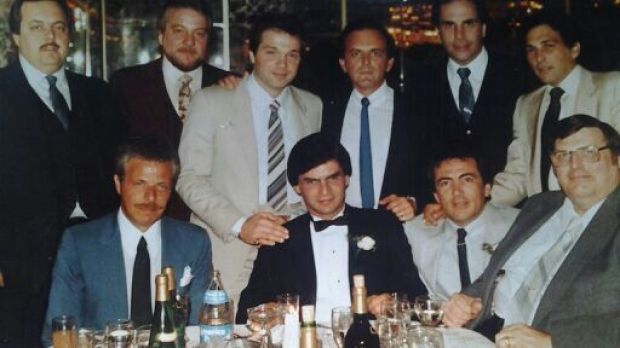
Michael Franzese Becomes a Caporegime
Michael Franzese becomes a Caporegime (captain) of the Italian mafia Colombo Family.
This position is similar to a Vice President in a corporate structure.
“I received a call requesting my presence at a designated house in Brooklyn.
When I arrived, I was greeted by Jimmy Angellino and other family members. “The boss says he wants to make it official,” Angellino said. “You are now a captain in La Cosa Nostra. Congratulations, Michael.”
Becoming a caporegime meant I could officially be the leader of a band of soldiers and associates.
But the new title gave me increased authority, more recognition among the made men and mob associates on the street, and more power in dealing with members of other families.
It also meant that, along with recruiting my own crew, made men soldiers would also be assigned to my command.” 14
11/21/1981
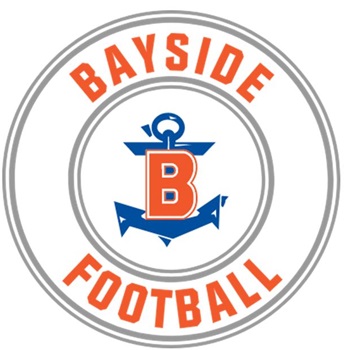
Ronnie Harmon’s High School Wins the P.S.A.L. Championship
Bayside defeated Abraham Lincoln, 48-31, yesterday, to capture its third Public Schools Athletic League championship in a row.
For the Commodores, now 10-0, it was the sixth P.S.A.L. title in the 11 years since the playoff system began.
Bayside struck with its best weapons, Lonnie Bellamy, the running back, and the Harmon brothers, Kevin, the junior quarterback, and Ronnie, the senior running back. 15
12/05/1981

Ronnie Harmon’s High School Loses the Metro Bowl
As pretty as St. John the Baptist quarterback Joe Gagliardi’s passes were, as breathtaking as Bayside halfback Ronnie Harmon’s runs were, let it be known that yesterday’s Metro Bowl was not merely an offensive display. Forget that six touchdowns were scored in St. John the Baptist’s 22-21 victory. Forget that Gagliardi completed 20 of 42 passes for 258 yards and three touchdowns. Forget that Harmon seemed to break a tackle for each pass Gagliardi attempted, accumulating 257 total yards and two touchdowns.
“The key was that we controlled Ronnie Harmon,” Gamble said. “We stopped him from running some big plays-and that made the difference.”
Not that the Bayside senior didn’t run some pretty big plays anyway. If the Cougars had forgotten about his uncanny ability to elude sure tackles, Harmon wasted little time reminding them. He took the opening kickoff 63 yards, setting up Lonnie Bellamy’s 10-yard touchdown run before the game was two minutes old. “We kicked it to the wrong man,” Gamble said.
Then, after Gagliardi marched the Cougars for touchdowns on successive drives, it was Harmon again. This time, he caught a screen pass from his brother Kevin at midfield, spun away from a linebacker and ran untouched for a 62-yard touchdown to tie the score at 14.
And there was more: Midway through the third quarter, he caught another screen, from St. John’s 15, and darted through a maze of defenders along the right sideline for the score that gave Bayside its 21-14 lead. 16
12/05/1981
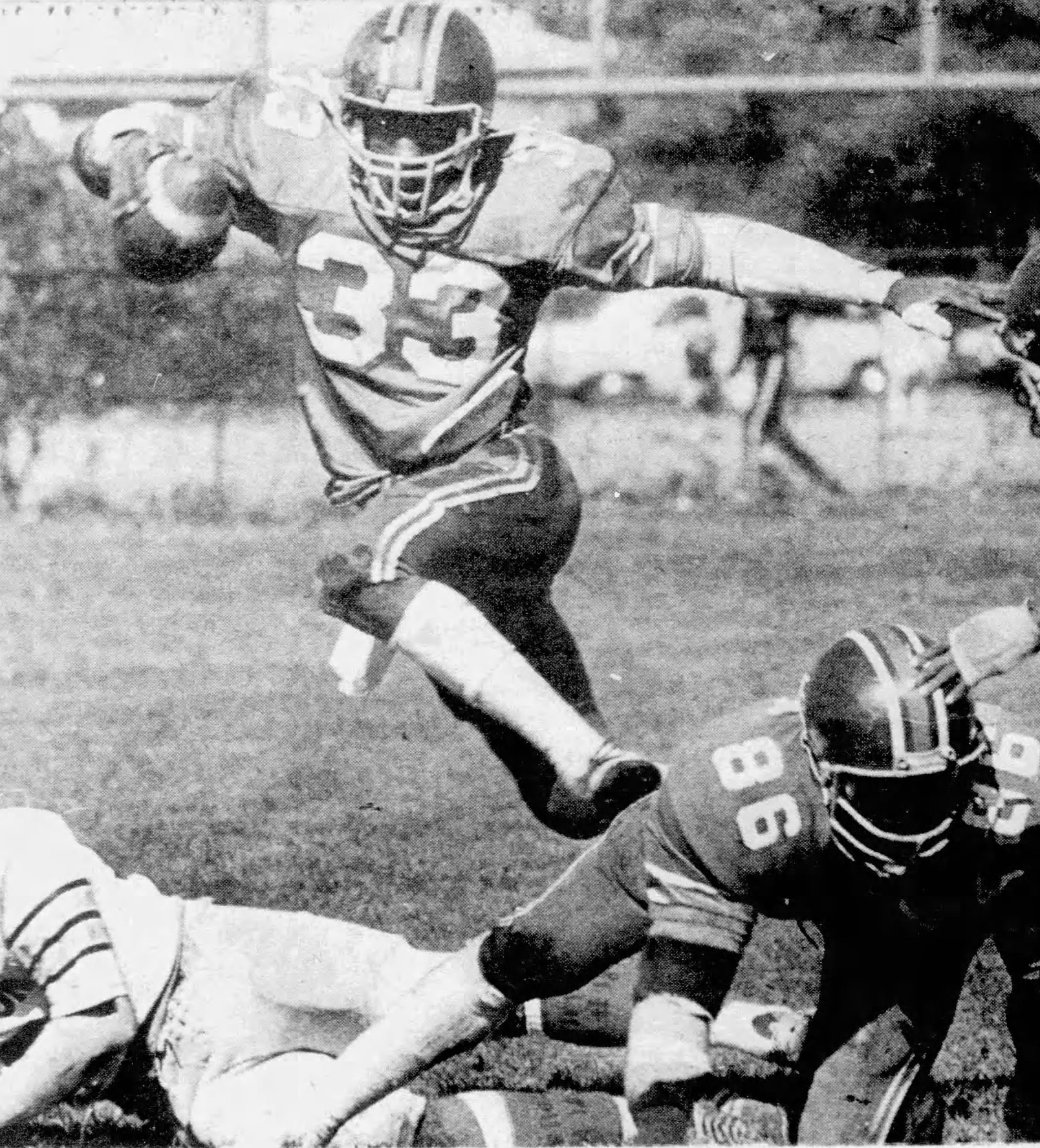
Ronnie Harmon Named Queens Player of the Year
This season, Harmon’s statistics finally are as flashy as his running style: 731 yards on 104 in Bayside’s 10-1 season. Of course, the 6-1, 190-pounder has earned the coaches’ selection as Newsday’s Queens Player of the Year for more than just his seven-yard rushing average.
There were the 10 interceptions, the 22 receptions for 470 yards, the 35-yard kickoff-return average, the 22-yard punt-return average, the 18 touchdowns, the 31-yard punting average, the leadership so important on a team that has won Public Schools Athletic League titles in all three of his varsity seasons.
Harmon gives credit to his offensive line for his improvement. “I wish I was rich,” he said. “I’d take them all out to dinner, like everyone else does. Without them, I couldn’t have done it.”
When a school tells me they want me as a defensive back, I say to myself, ‘I don’t care. It’s a college. I’m going for my education first.’” 17
2/10/1982
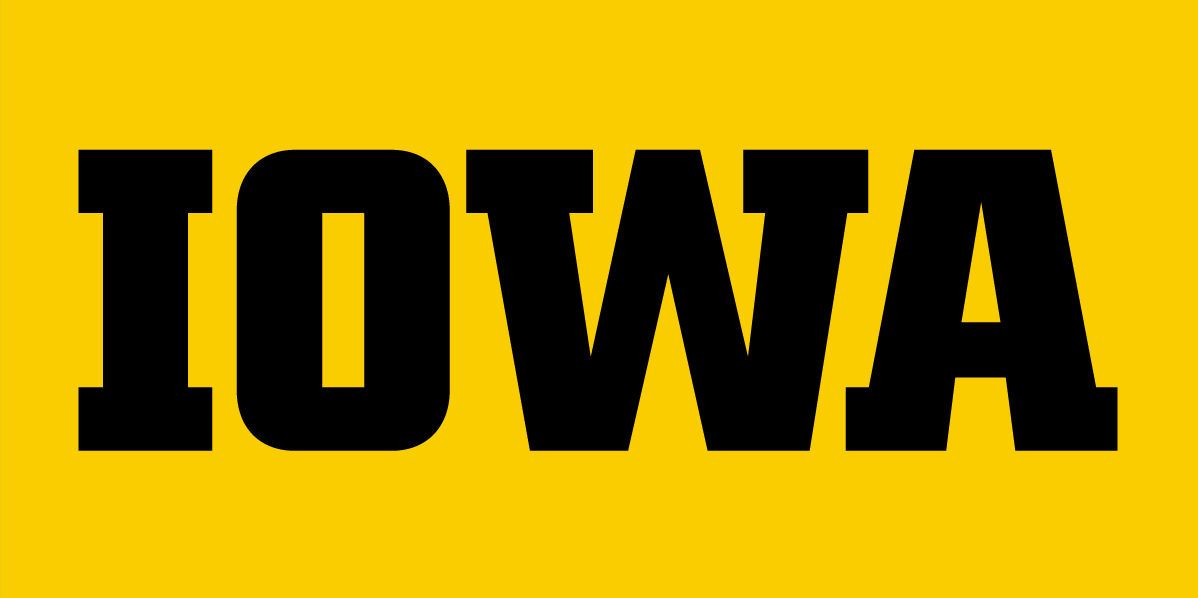
Ronnie Harmon Commits to Iowa
Ronnie Harmon signs a National Letter of Intent to play for the University of Iowa and receives a full scholarship. 18
5/15/1983
Michael Franzese Expands to DelRay Beach, Florida
Michael Franzese expands his operation to Florida to get involved in movie production. 19
5/15/1984
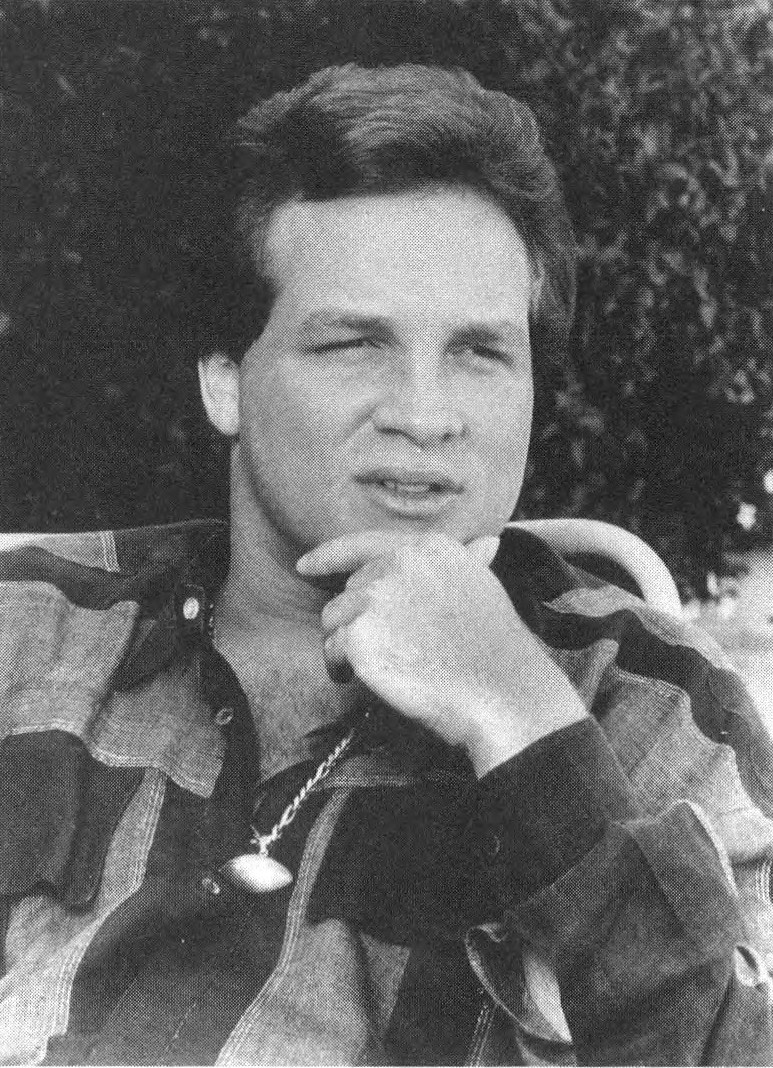
Bloom Proposes Sports Agent Business to Walters
Ex-bouncer and high school football player Lloyd Bloom proposes forming a sports agent business to Norby Walters.
They name the sports agent business World Sports & Entertainment.
“In the spring of 1984, Bloom was working for his father’s credit and collections business in Westchester County, N.Y., and promoting “theme nights” at glitzy Manhattan discos.
The work was fine, but Bloom, 24 years old, was itching for a change. “I wanted to become a sports agent,” he said.
Why?
“Because I felt agents weren’t doing right by the athletes. They were really ripping them off.”
Bloom could not afford to bankroll his own business, so he called on Walters, whom he had met six years earlier at a Gloria Gaynor-Village People concert.
“I said, ‘Norby, you’re No. 1 in black music. Your company is a very legit company. Very big. Why not expand it to sports?’ ” Bloom recalled.
“Norby liked the idea. He said, ‘Great.’ I said, ‘I’ll do the legwork, and you fund the business.’
He said, ‘Fine.’ ” 20
6/15/1984
Michael Franzese Moves to Los Angeles
Michael Franzese moves to Los Angeles. His goal is to grow his film production business. 21
12/15/1984
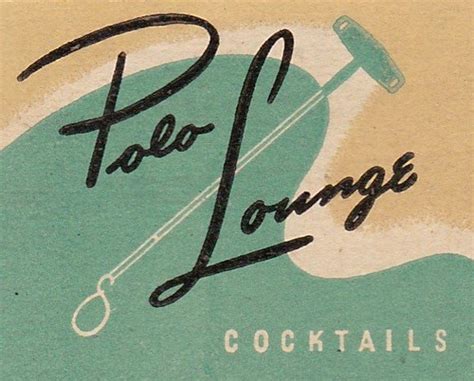
Walters Asks Franzese to Join Sports Agent Business
At a meeting at the Polo Lounge of the Beverly Hills Hotel, Norby Walters asks Michael Franzese to participate in the new sports agent business Walters is starting with Lloyd Bloom. 22
Franzese later related to the FBI, “[Norby] said that, like his entertainment [agent] business, he wanted to deal only with black athletes, and he wanted to sign the biggest stars, represent them in their professional contracts as well as their endorsements.” 23
1/15/1985
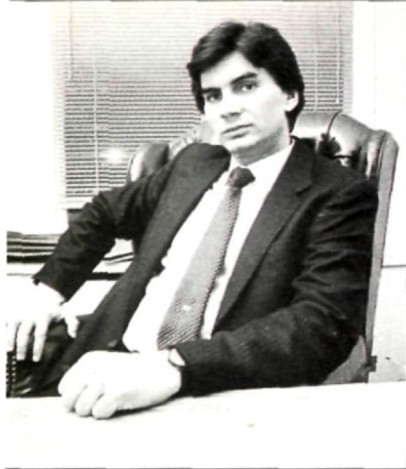
Colombo Mob Approves Michael Franzese’s Plans
Colombo mafia family capo Michael Franzese gets mafia Don approval for Franzese’s plan to build “an army” of college and professional athletes under mafia control to fix games for gambling profits.
“My interest when l took it back to the boss of my family was … ‘look we’re going to be around players.
What better way to get close to the players.
It’ll benefit us in the gambling industry.’
He said, ‘Go for it.’ ” 24
2/15/1985
Michael Franzese Partners With Walters
Colombo mafia family capo Michael Franzese agrees to a partnership in Norby Walters’ sports agent business. 25
In 1989 court testimony, Franzese testified under oath:
Q. And what was said at this meeting?
A. Norby went into the business arrangement in further detail. I believe he told me he had started a company.
He explained to me at that time that he would be using cash to sign a lot of these athletes, and he asked me at that time to partic1pate on a cash basis.
Q. What did he ask for?
A. He asked for $50,000 [worth $141,000 today]. 26
Q. And what if anything were you to receive in return for the $50,000?
A. 25 percent of the business.
Q. Were you to perform ny other services in connection with this?
A. I would continue to perform the service that I had always performed for him, yes.
Q. Was there any talk at that meeting about when the $50,000 would be returned or how it would be returned?
A. Yes. He said that if things went well, it should be returned within a year. 27
Full Michael Franzese testimony transcript is here: http://1986rosebowl.com/wp-content/uploads/2023/11/1989-03-14-case-88-CR-00709-Franzese-testimony-transcript-TITLE-OCR.pdf
3/9/1985

Ronnie Harmon Flies to New York, Meets Walters
Ronnie Harmon flies to New York City and meets with Norby Walters.
Walters paid for the trip, including a limousine trip from the airport to Walters’s office and on to Harmon’s parent’s home. 28
3/10/1985
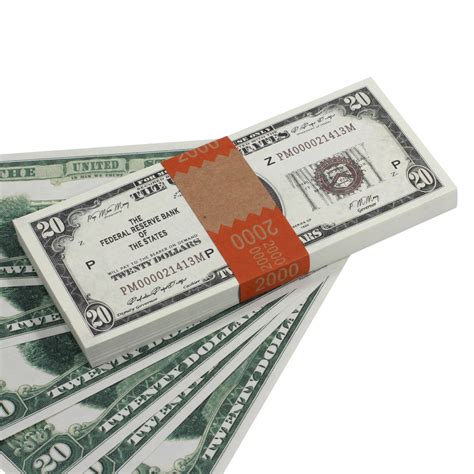
Ronnie Harmon Signs Walters Contract, Takes $2,500 Cash
Ronnie Harmon signed a contract with Norby Walters and Lloyd Bloom in violation of NCAA rules.
Harmon also accepted $2,500 (worth $7,000 today) in cash and agreed to receiving additional monthly payments of $250 (worth $700 today).
Jesse Harmon, Ronnie’s father, was present at the meeting.
The Harmon’s secretly made an audio recording of the meeting. 29
4/8/1985

Walters Wires Harmon $250
Norby Walters sends Ronnie Harmon $250 (worth $705 today) via Western Union. 30
5/3/1985

Walters Wires Harmon $200
Norby Walters sends Ronnie Harmon $200 (worth $565 today) via Western Union. 31
5/14/1985

Walters Wires Harmon $600
Norby Walters sends Ronnie Harmon $600 (worth $1,690 today) via Western Union. 32
5/15/1985
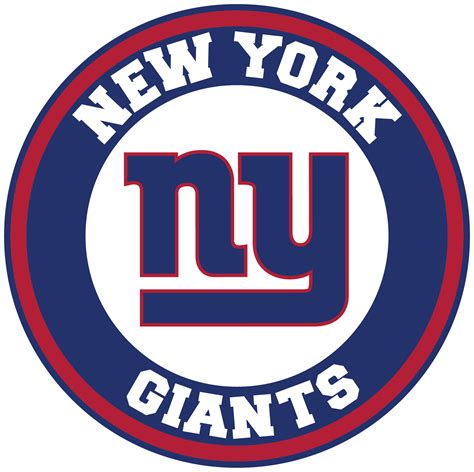
Giants General Manager Visits Walters
[Iowa State’s Tracy] Henderson was selected by the New York Giants in the fifth round of the 1985 draft.
In the midst of contract negotiations, Walters invited Giant General Manager George Young to his office on Broadway.
“A nice man,” Walters said of Young. “When he came to my office, he looked around and said, ‘There’s no question in my mind that in 24 months you’ll be the biggest agent in sports. You can’t be this (a successful entertainment agent) and not be that (a successful sports agent).’ ”
Walters later invited Young to a party at Visage, a Manhattan disco. “There were 2,000 people wall-to-wall, just everybody in show business,” Walters recalled. “And these were only my closest and dearest friends. George couldn’t believe that a businessman would throw a party for 2,000 people and be surrounded by stars all over the place.” 33
6/15/1985

U.S. Attorney Dan Webb Resigns
U.S. Attorney for the Northern District of Illinois Dan Webb resigns to join a private law firm.34
He was followed in the U.S. Attorney’s office by Anton Valukas.
They would later face off in a federal courtroom in the Walters and Bloom case.
Webb led Bloom’s defense and Valukas, as U.S. Attorney, led the prosecution.
They worked together earlier in their careers and still took an annual fishing trip together. 35
6/24/1985

Walters Wires Harmon $500
Norby Walters sends Ronnie Harmon $500 (worth $1,410 today) via Western Union. 36
6/25/1985

Walters Wires Harmon $500
One day later, Norby Walters sends Ronnie Harmon another $500 (worth $1,410 today) via Western Union. 37
7/25/1985
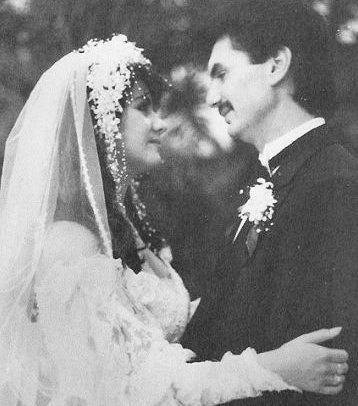
Michael Franzese Remarried in Los Angeles
Michael Franzese gets remarried in Los Angeles. 38
8/3/1985

Walters Wires Harmon $250
Norby Walters sends Ronnie Harmon $250 (worth $705 today) via Western Union. 39
8/15/1985
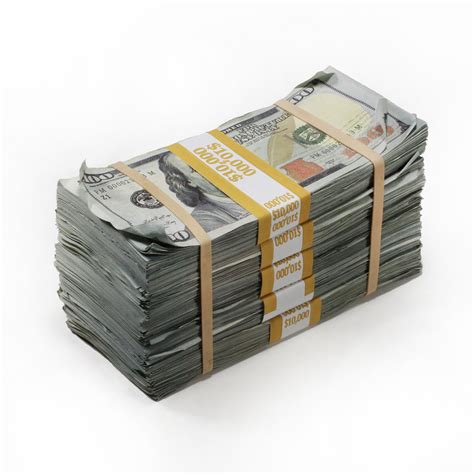
Michael Franzese Provides $50,000 Cash to Walters
Colombo mafia family capo Michael Franzese provides an initial $50,000 (worth $141,000 today) to Norby Walters 40
In 1989 court testimony, Franzese testified under oath:
Q. And who gave something to Mr. Walters?
A. My bother-in-law, Dino.
Q. And what was it that he gave to Mr. Walters?
A. It was a bag with money inside.
Q. What type of bag?
A. Brown paper bag.
Q. And how much money was inside?
A. $50,000.
Q. In what form?
A. Cash.
Q. Where did that money come from?
A. Came from me.
Q. Why didn’t you carry the bag in?
A. I just — because of the problems I had, I just never carried money on me in that amount.
Q. What was the $50,000 for?
A. It was for my participation in the sports agency business. 41
Full Michael Franzese testimony transcript is here: http://1986rosebowl.com/wp-content/uploads/2023/11/1989-03-14-case-88-CR-00709-Franzese-testimony-transcript-TITLE-OCR.pdf
8/25/1985
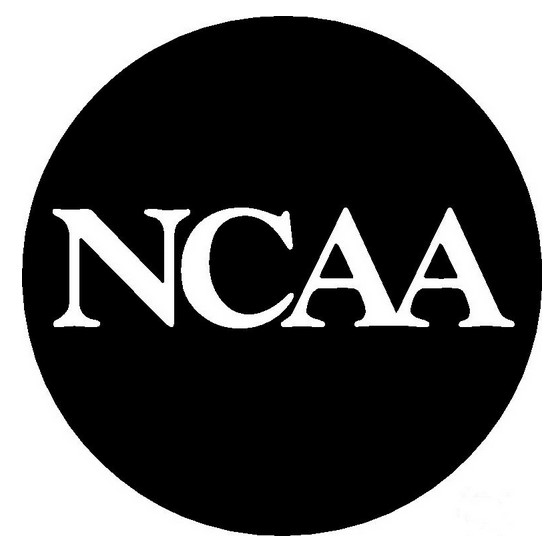
Harmon Lies to NCAA
Ronnie Harmon certifies to the NCAA that he is eligible.
Specifically, he certified, “I am not aware of any violations of NCAA regulations involving me and my institution” on the “National Collegiate Athletic Association Student Athlete Statement, 1985-86 Academic Year” form. 42
In 1989 court testimony, Harmon testified under oath:
Q. Let me ask you to focus your attention to Paragraph 5. What does it state there?
A. “I am not aware of any violations of NCAA regulations involving me and my institution.”
Q. You certified that that was true; is that correct?
A. Yes.
Q. Was that statement true?
A. No.
Q. Why not?
A. Because I signed early in March of ’85.
Q. At the time you signed this statement in August of 1985, did you know that the form was false?
A. Yes.
Full Ronnie Harmon testimony transcript is here: http://1986rosebowl.com/wp-content/uploads/2023/11/1989-03-07-case-88-CR-00709-Harmon-testimony-transcript-TITLE-OCR.pdf
8/25/1985
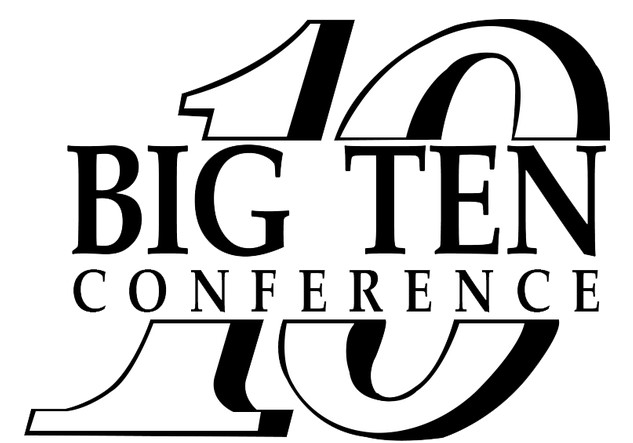
Harmon Lies to the Big Ten
Ronnie Harmon certifies to the Big Ten that he is eligible and has not signed with an agent or received any money. 43
In 1989 court testimony, Harmon testified under oath:
Q. I’m sorry. At the top it says, “Name;” is that right? “Big Ten Conference Statement of Eligibility,” Government Exhibit 3-A?
Q. Let me ask you it you would, is that your signature at the bottom?
A. Yes.
Q. And then it’s also signed by Coach Fry and Mr. Mims?
A. Yes.
Q. Okay. Let me ask you if you would to focus on Question 7. What does that question ask?
A. “Have you ever signed a professional athletic contract in your sport or been represented by an agent?”
Q. How did you answer that question?
A. “No.”
Q. Was that answer truthful?
A. No.
Q. Now, let me ask you to turn to the flip side of that document, which ls the next page in the exhibit book. That’s actually marked Government Exhibit 3-B, right?
A. Yes.
Q. Okay. That’s the Big Ten Conference Statement of Financial support?
A. Yes.
Q. What was the purpose of that form?
A. To see where you was getting your money from, if you was working or if you had any loans from the school.
Q. Under the section that’s marked “Loans,” what did you write?
A. That I didn’t receive any.
Q. Was that answer correct?
A. No.
Q. Why not?
A. Because l received $2500 and was given $250 a month.
Q. And then under “Other,” they ask for other forms of income. And you didn’t list any additional money for payments that you had received from Mr. Bloom or Walters; is that right?
A. Yes.
Q. Why didn’t you report the monies that you had received from Mr. Walters and Mr. Bloom?
A. Because then I would have been ineligible to receive scholarship money and probably been kicked off the football team.
Q. And focusing now on Paragraph 5 of that document, did you certify upon penalty of ineligibility for intercollegiate athletics and loss of your financial aid that those statements
were true and correct?
A. Yes.
Q. And they weren’t, were they?
A. No.
Full Ronnie Harmon testimony transcript is here: http://1986rosebowl.com/wp-content/uploads/2023/11/1989-03-07-case-88-CR-00709-Harmon-testimony-transcript-TITLE-OCR.pdf
9/3/1985

Walters Wires Harmon $250
Norby Walters sends Ronnie Harmon $250 (worth $705 today) via Western Union. 44
10/2/1985

Walters Wires Harmon $250
Norby Walters sends Ronnie Harmon $250 (worth $705 today) via Western Union. 45
11/4/1985

Walters Wires Harmon $250
Norby Walters sends Ronnie Harmon $250 (worth $705 today) via Western Union. 46
12/1/1985
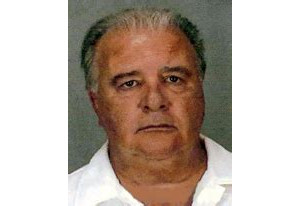
Franzese Tells Walters to Use Campione
Knowing that he was about to be indicted, Michael Franzese tells Norby Walters to contact Frank Campione if Walters needs anything while Michael Franzese is incarcerated.
In 1989 testimony, Franzese testified under oath:
Q. When were you put into custody and when did you go to the halfway house?
A. I went into custody on December 20, 1985, and after I entered into the plea agreement in March, I was put into a halfway house on March 26, I believe, 1986.
Q. Prior to March of 1986, did you have occasion to have a conversation with Mr. Walters about a person by the name of Frank Campione?
A. Yes.
Q. Who was he?
A. He was a close friend and an associate of mine and my father’s.
Q. Was he associated with the Colombo family?
A. Yes.
Q. Where did that conversation occur?
A. I believe it was someplace in Manhattan. I believe it was in Norby’s office.
Q. To the best of your recollection, was anybody else present besides you and Mr. Walters?
A. No. Not that I recall.
Q. At the time you had this conversation, did you know that you were going to be indicted?
A. Yes.
Q. And to the best of your recollection, what did you say to Mr. Walters and what did Mr. Walters say to you?
A. I told Norby that if he had any problems in the future to be in touch with Frankie. 47
Full Michael Franzese testimony transcript is here: http://1986rosebowl.com/wp-content/uploads/2023/11/1989-03-14-case-88-CR-00709-Franzese-testimony-transcript-TITLE-OCR.pdf
12/2/1985

Walters Wires Harmon $250
Norby Walters sends Ronnie Harmon $250 (worth $705 today) via Western Union. 48
12/6/1985

Walters Wires Harmon $250
Norby Walters sends Ronnie Harmon $250 (worth $705 today) via Western Union. 49
12/16/1985

Walters Wires Harmon $250
Norby Walters sends Ronnie Harmon $250 (worth $705 today) via Western Union. 50
12/18/1985
Franzese Indicted
Authorities in two states yesterday accused Michael Franzese of Brookville of operating multimillion-dollar schemes that defrauded banks, oil companies, car manufacturers and state governments Federal prosecutor said that their investigation also established that Franzese, the 34-year-old stepson of a once-prominent organized crime figure, has become a major racketeer in his own right.
The first set of charges, a 28-count indictment, was handed up around noon by a federal grand jury in Brooklyn against Franzese and eight other persons identified as the “Franzese group.” The indictment alleged that the group skimmed millions of dollars in sometimes violent, often complicated plots against such corporations as Mobil Oil, Citicorp, Beneficial Commercial Corp., the Chevrolet Division of General Motors, Mazda Motors of America and Chemical Bank.
Those charges for the first time linked Franzese to a scheme that has cost New York state an estimated $250 million in sales tax revenue.
Charged along with Franzese yesterday was Lawrence Iorizzo, the former head of Vantage Petroleum Corp., who has been convicted of federal charge of tax, mail and wire fraud and who has become a government witness in
the federal witness-protection program. 51
12/20/1985
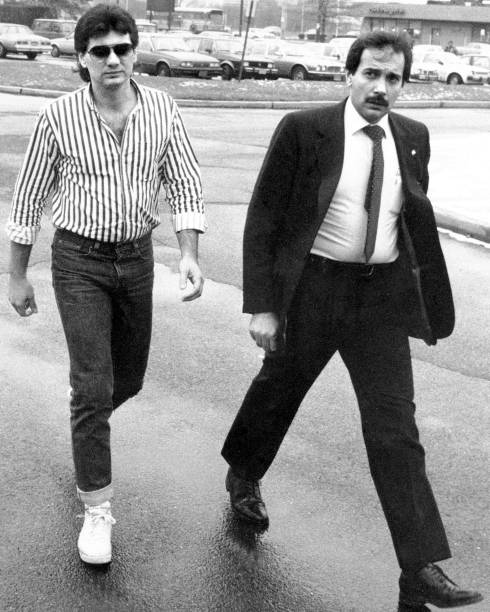
Franzese Surrenders
Michael Franzese, accused in two states of multimillion-dollar schemes that defrauded Florida and some of the nation’s largest firms, surrendered yesterday to a lone state trooper in a fast-food restaurant after federal agents had searched fruitlessly for him for 32 hours.
But the unshaven, casually dressed Franzese – who politely thanked Broward County Court Judge Lawrence Corda after Corda set bail on state charges at $124,000 – wound up in federal hands anyway.
After a bondsman posted his bail, the 34-year-old racketeering suspect was handcuffed and turned over to FBI agents who arrested him on federal charges. 52
12/23/1985
Harmon Looks Forward to Getting Out of Iowa
Iowa assistant coach Bernie Wyatt:
“Ronnie can literally be surrounded … and get out of it somehow”
Ronnie Harmon:
“I run pretty close to the person I am.”
“You can’t let people distract you and pull you off the course that you’ve set for yourself.”
“I want to do something really good when I get out of here” 53
12/31/1985
Harmon Costs Walters an Additional $15,657
In addition to the Western Union payments, Norby Walters spent $15,657 (worth $44,131 today) on Ronnie Harmon in 1985.
The total included $12,157 in travel expenses, a $2,000 cash advance, another $1,500 for an unexplained purpose and concert tickets. 54
1/1/1986
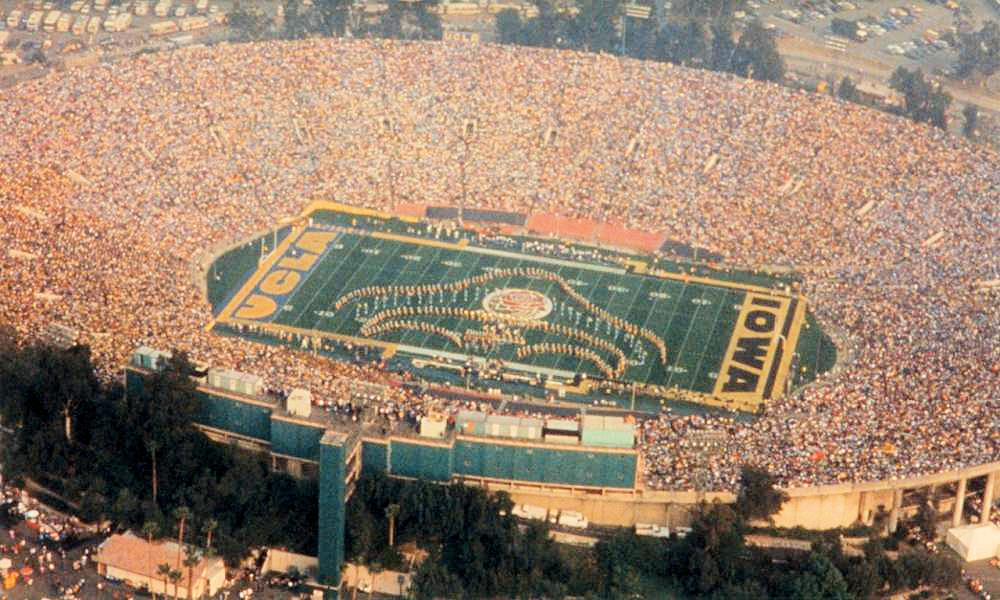
1986 Rose Bowl
In a major upset, #13 UCLA won the 1986 Rose Bowl game over #3 Iowa.
One of Iowa’s star players, Ronnie Harmon, fumbled four times in the first half, threw a halfback pass wildly into the sidelines, and dropped a touchdown pass.55
Later legal proceedings reveal that Ronnie Harmon received $54,924 (worth $155,000 today) from mafia-linked sports agent Norby Walters prior to and after the Rose Bowl game. 56
Michael Franzese, the mafia capo who provided the money and extortion muscle, started the sports agent business with Norby Walters with the goal of controlling athletes to fix games for gambling purposes. 57
1/10/1986
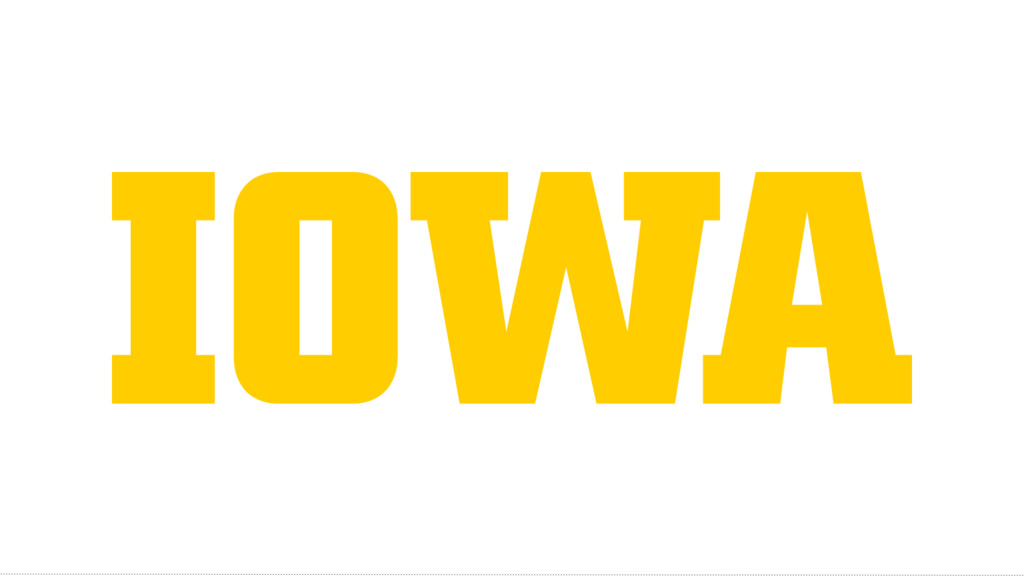
Ronnie Harmon Quits College
Immediately after the Rose Bowl, Ronnie Harmon withdraws from the University of Iowa. 58
He made essentially no progress towards a degree in his four years at Iowa and never completed a college degree.
In 1989 testimony, Fred Mims, Iowa Assistant Athletic Director, testified under oath:
Q. How does the graduation rate for your student athletes at the University of Iowa compare to your graduation rate for students in the general population at the University of Iowa who are not athletes?
A. The athletic population graduates at a higher rate than the normal student body. 59
Q. He stopped classes. He stopped attending the university and he withdrew from every course but one; didn’t he?
A. Yes. 60
3/21/1986
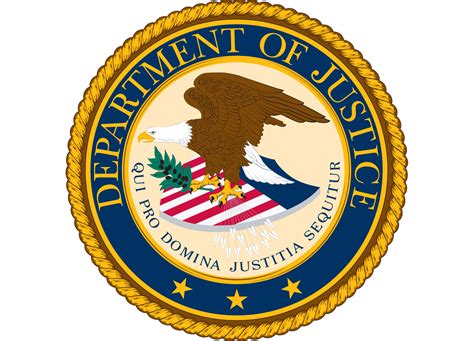
Michael Franzese Pleads Guilty
Michael Franzese pleaded guilty to one count of racketeering conspiracy and one count of tax conspiracy in exchange for a 10 year sentence and a $14 million (worth $38 million today) fine. 61
Franzese worked out an agreement with the U.S. Justice Department to stay free to earn money to pay his fine. He was responsible for paying for his U.S. Marshals Service surveillance.
5/15/1986

Walters Leases Mercedes for Harmon
Norby Walters pays $30,000 (worth $81,000 today) to lease a Mercedes Benz 560 SEC, valued at $64,000 (worth $174,000 today), for Ronnie Harmon. 62
6/15/1986
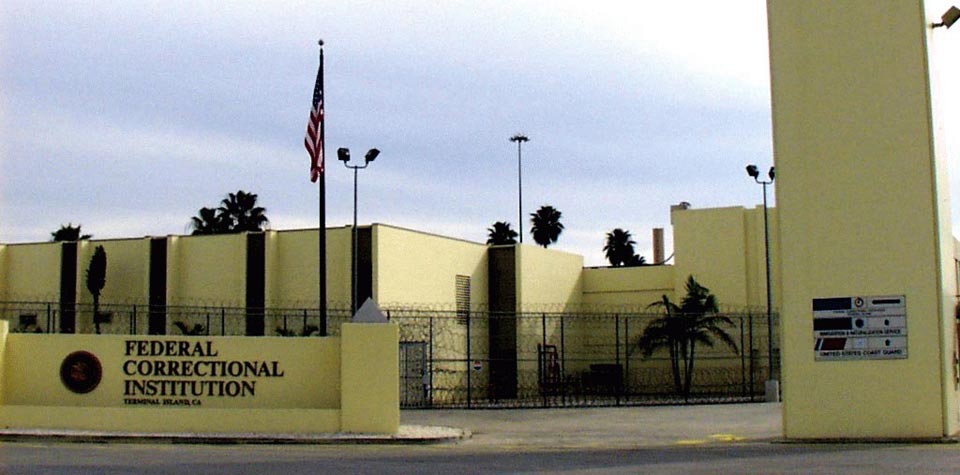
Michael Franzese to Prison
After bouncing checks to the U.S. Marshall’s service to pay for his monitoring under his plea agreement, Michael Franzese is sent to Terminal Island San Pedro prison in Los Angeles, CA. 63
8/12/1986
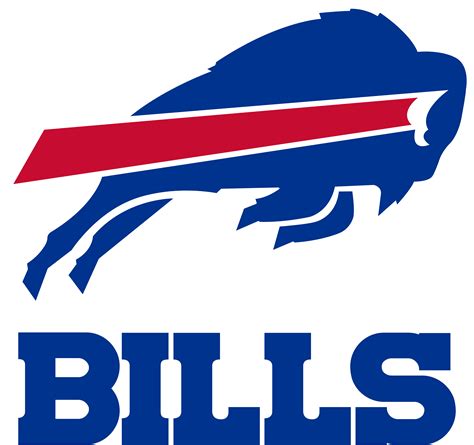
Harmon Signs NFL Contract for $1.35 Million
After 15 months with Walters and Bloom as his sports agents, Ronnie Harmon switches sports agents over the weekend to Marty Rock.
On the following Tuesday, Harmon signs a contract – a contract that Walters and Bloom had negotiated – with the Buffalo Bills NFL team for $1,350,000 (worth $3,666,000 today).
Marty Rock earns all the sport agent commission for the contract. 64
11/7/1986

Michael Franzese Signs Cooperation Agreement With Feds
Michael Franzese signs a cooperation agreement with the U.S. to provide background information on the mafia and the people in it. 65
The agreement includes a provision that if anyone convicted based on his information paid the government restitution or a fine, that amount would be deducted from the $14 million (worth $38 million today) Franzese owed the government as part of his plea deal. 66
1/16/1987
Bloom Threatens Kathy Clements
In a hotel bar at the 1987 Senior Bowl, Lloyd Bloom tells Kathy Clements, “people who don’t pay their debts can have their hands broken.”
Bloom was referring to the three former Walters and Bloom client athletes who dropped Walters and Bloom and signed sports agent contracts with Clements.
Walters and Bloom were threatening the athletes to re-sign contracts with them or repay the money Walters and Bloom paid the athletes. 67
2/15/1987
Walters Requests Mob Intimidation and Assault Services
Walters requests mob intimidation and assault services from Michael Franzese to deal with competing sports agents who are taking his clients. 68
In particular, he needs “some broad in Chicago” dealt with.
These intimidation and assault services were the core of Walters and Franzese’s business relationship.
Walters built his entertainment agent business via Sonny Franzese’s crew intimidating and/or assaulting venue managers, competing agents, talent managers, and performers. 69
Michael Franzese provided the same services for Walters’ sports agent business.
3/12/1987
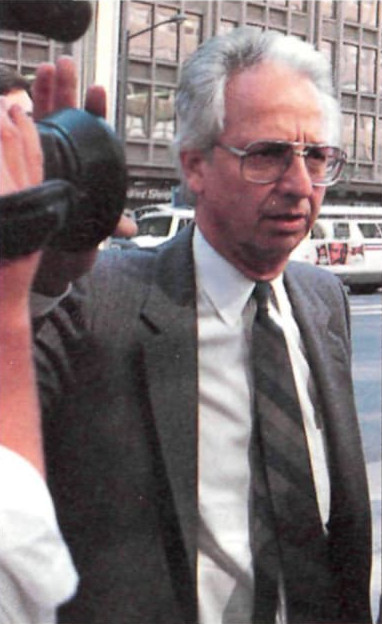
Norby Walters Admits Paying College Athletes
Norby Walters, a New York-based entertainment agent, admitted in a story published in the Atlanta Journal-Constitution that he had paid cash to numerous college athletes. 70
In the story, Walters is quoted saying, “I’m taking care of business, and I’ll make the choices on what I have to do.”
3/13/1987
Colleges Open Investigations
At least five colleges opened investigations to determine whether Walters had dealt with their players: Florida, Alabama, Auburn, Michigan State and Ohio State. 71
3/16/1987
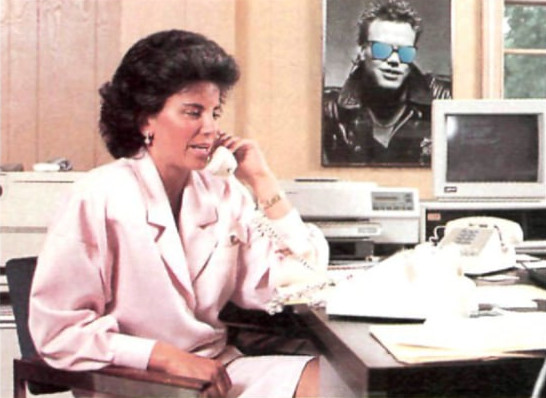
Sports Agent Kathy Clements Assaulted
Kathy Clements, a rival sports agent who had received threats from Walters, was stabbed and beaten unconscious by a masked man in her office in Skokie, Ill, a suburb of Chicago.
A Skokie police detective called it “a message beating.”
The police passed along to the FBI a copy of the March 12 Atlanta Journal-Constitution story about Walters paying college athletes that was on Clements’s desk. 72
3/17/1987
Norby Walters Makes Short Trip to Chicago
The day after the assault of Kathy Clements, Norby Walters took a late-night flight from New York to Chicago. The return flight was the next morning.
Walters was in Chicago about 12 hours, and then flew back to New York. 73
Investigators suspected that Walters flew to Chicago to pay for the assault on Clements.
3/26/1987
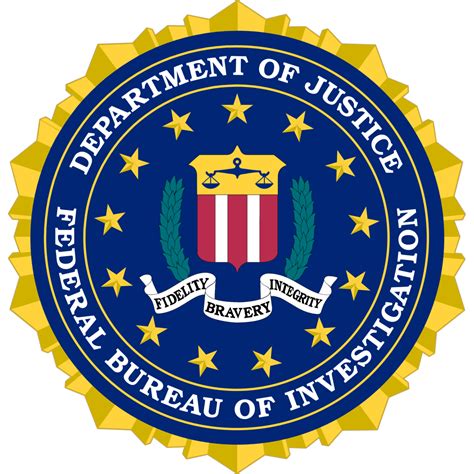
FBI Opens Probe on Walters and Bloom
The FBI is investigating alleged threats and violence involving sports agents and players. According to a number of sources familiar with the investigation, Norby Walters and Lloyd Bloom, two New York agents, are among the subjects of the inquiry. 74
3/27/1987
Walters Files Lawsuits Against College Athletes
Walters files lawsuits against former college athletes Brent Fullwood of Auburn and Terrence Flagler of Clemson, alleging that the college athletes signed contracts and accepted money before their senior seasons – violations of NCAA rules – and then reneged on the contracts. 75
4/28/1987

UW Athlete Reggie Rogers Files Lawsuit Against Walters
University of Washington defensive end Reggie Rogers, in a lawsuit filed against Walters, gave this account of a meeting with the agent in December: Walters opened his briefcase, and said, “I came prepared,” took $5,000 cash out of the briefcase and spread it across the living room floor in front of Rogers. Walters allegedly told Rogers he would not be breaking NCAA rules by accepting the money and signing a contract. 76
5/19/1987
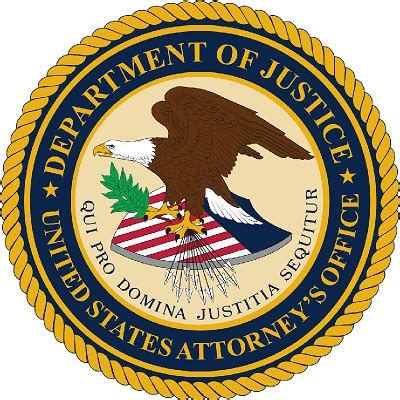
Grand Jury Convenes
A federal grand jury began proceedings in Chicago to investigate the activities of Walters and Bloom. Several athletes and athletic directors were immediately subpoenaed to testify.
The grand jury would consider such charges as fraud, mail fraud, wire fraud, extortion, and violation of the RICO (Racketeering Influenced Corrupt Organizations) Act against the agents.
The grand jury would also consider indictments against athletes for committing fraud against colleges by signing contracts in violation of the terms of their signed scholarships. 77
5/20/1987

Athletes May Face Fraud and Tax Evasion Charges
College athletes allegedly involved with Walters and Bloom were told by a U.S. Attorney that they could face up to one year in jail for fraud and tax evasion. 78
6/7/1987

Harmon and McKey Investigated for Points Shaving
The U.S. Attorney’s office, FBI, Big Ten, and Southeastern Conference had investigated the possibility of point shaving in games played by former Iowa running back Ronnie Harmon and former Alabama basketball player Derrick McKey, both of whom were under contract with Walters and Bloom.
Alabama athletic director Steve Sloan said, “Any time one guy gives money to another guy, the red flag goes up. Gambling is the one thing that could ruin college athletics.” 79
6/10/1987

Athletes Offered Plea Deal
Athletes implicated in the grand jury investigation may have an opportunity to avoid prosecution if they accept a “pre-trial diversion” program that includes community service. 80
6/17/1987
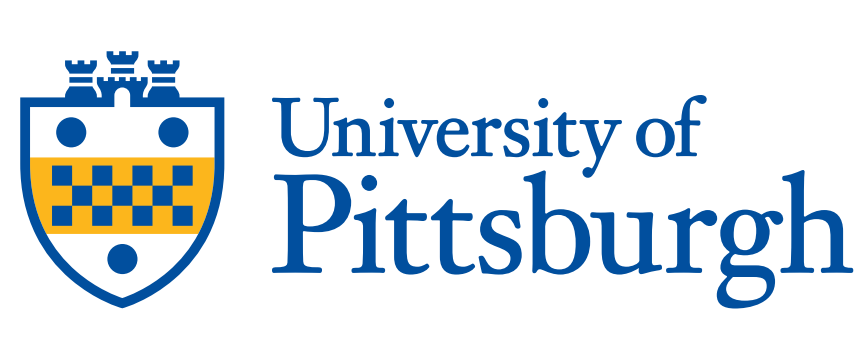
Pitt to Declare Gladman and Austin Ineligible
Two football players with eligibility remaining at the University of Pittsburgh, Charles Gladman and Teryl Austin, will soon be declared ineligible by the school for signing contracts with Walters and Bloom. 81
6/26/1987

Walters Told Austin to Tear Up Contract
Austin told school officials that Walters stopped $250 per month payments and encouraged him to tear up his contract because the player’s value as an NFL prospect had dropped. 82
6/28/1987

Pearl and Big Ten Review Video, Clear Harmon
Unnamed and unknown Big Ten officials and assistant U.S. Attorney Howard Pearl reviewed the video of the 1986 Rose Bowl and concluded that Ronnie Harmon did not fumble intentionally and that the game is no longer under investigation. 83
There was no evidence that the Big Ten officials involved had any experience playing football at the collegiate level or any experience on a collegiate football staff as assistant or coach.
Howard Pearl attended Brown University and there is no record of his participating in the football program as a player, manager, assistant, or coach in the Football program media guides for 1972 84, 1973 85, 1974 86, or 1975 87.
The U.S. Attorney team was and remained intent on protecting Ronnie Harmon from anything that could undermine Harmon’s credibility with the jury.
7/14/1987
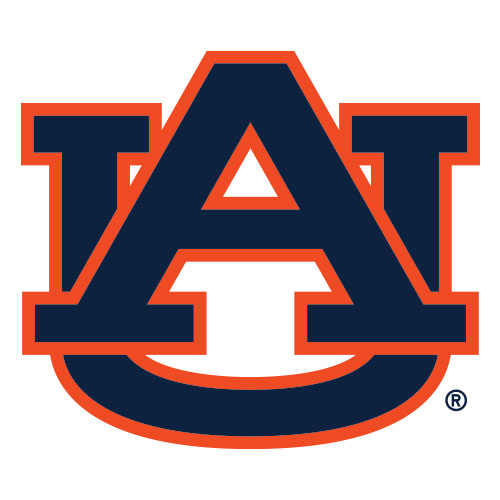
Bloom Threatened to Kill Rival Agent
Former Auburn University running back Brent Fullwood said he testified before the grand jury that Bloom threatened to “bump off” his current agent, George Kickliter. 88
7/15/1987
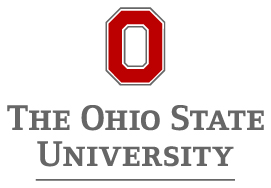
OSU’s Carter Declared Ineligible
Ohio State wide receiver Chris Carter was declared ineligible for taking money from and signing a contract with Walters and Bloom. 89
7/19/1987
Bloom Tells Signing Technique
Walters and Bloom, who are white, decided they would recruit only black athletes.
“We stick to blacks,” Bloom said. “That’s what we know best. We’re plugged into the
black market.”
Would they even attempt to recruit a white athlete?
Bloom shook his head.
“If I go to a black concert, an R & B show, everybody’s dressed up, everybody’s moving in a good groove,” he explained. “You go to a white rock ‘n’ roll concert, like the Rolling Stones or Bruce Springsteen, everybody looks like a mass murderer, like they’re capable of going to McDonald’s and blowing up the whole joint. It’s just a different type of group. I’ve never recruited a white athlete.”
WSE’s first undergraduate client was Ronnie Harmon, who was signed in the spring of 1985, as a junior. Over a one-year period, Harmon accepted $54,172 in loans from Walters and Bloom, according to a lawsuit filed by WSE. In his answer to that suit, Harmon admitted signing with WSE during his junior season but denied receiving that amount of money.
The other afternoon, at the townhouse in Sherman Oaks, Calif., that he shares with his wife, actress Donna Denton (former co-star of “Mickey Spillane’s Mike Hammer”), Bloom described the system he has used to recruit and sign clients:
“First,” he said, “I’d get the player’s phone number. . . . You know, call the football office (at a university) . . . you know, use whatever I can to get a phone number.”
Once he contacted the athlete, he would make his best pitch: “Patti LaBelle–one woman alone–makes more than four first-rounders. So if we’re capable of handling her career, we sure can handle you.” And if that didn’t work: “What are you going to do? Go with some local, broken-down attorney?”
If the athlete seemed interested, Bloom said he would warn him about the risks of violating NCAA rules: “ ‘If this gets out, you can lose your eligibility. But we’re the only ones who know about it. So it shouldn’t get out unless you brag. Because we’re not going to brag about it.’ ”
As an inducement to sign, Bloom said, he would offer to loan the athlete some money, which would not have to be repaid, he said, if the athlete did not sign a pro contract. “So I was the one who was gambling,” Bloom said. “Instead of going to Atlantic City or Las Vegas, I was gambling that a kid’s going to be a thoroughbred.”
Finally, Bloom said, the athlete’s contract with WSE would be postdated (presumably so it could not be used as evidence that the athlete had violated NCAA rules). “We postdated the contracts to protect the kids,” Bloom said. “And to make everything easy, understandable.” 90
7/28/1987
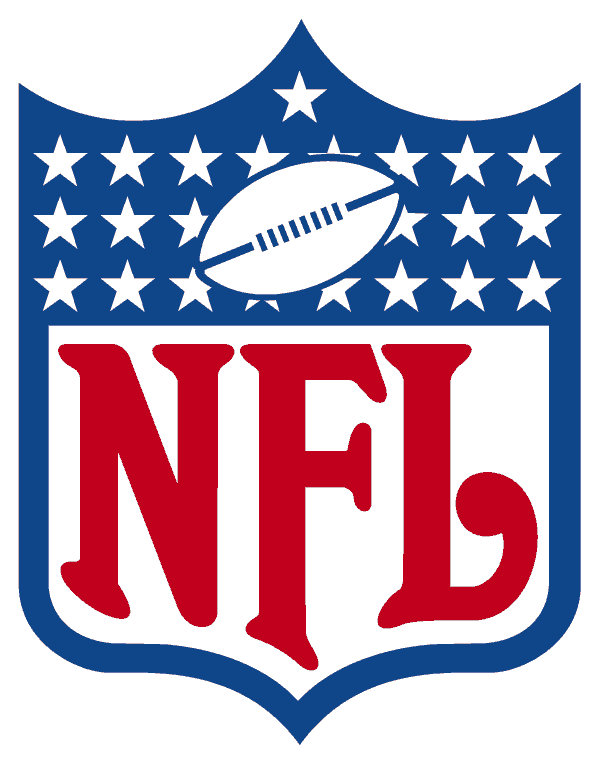
NFL Linked to Walters
Lloyd Bloom disclosed that he and Norby Walters have purchased information – including phone numbers – on college athletes from NFL scouts. 91
7/29/1987

UT to Declare James Lott Ineligible
The University of Texas will declare three-time NCAA champion high jumper and football defensive back ineligible for his senior season for accepting money from Walters and Bloom. 92
8/16/1987

Bloom Banned by NFLPA
Lloyd Bloom became the first agent every permanently decertified by the NFLPA, meaning NFL teams would not be allowed to negotiate with the agent.
Bloom responded, “So what? The NFLPA has no jurisdiction over college seniors.” 93
8/26/1987

Austin Gets NCAA Amnesty
The NCAA announced a conditional “amnesty program” and reinstated Pitt defensive back Austin, who had cooperated with investigations of Walters and Bloom. 94
9/11/1987
Carter Sues Walters
Cris Carter filed a $4 million dollar lawsuit against Walters and Bloom for damages he sustained in losing his NCAA college eligibility.
The lawsuit includes allegations that “Walters suggested, by reference to Walter’s ability to have a recalcitrant player’s legs broken, that Cris would suffer physical harm if he did not adhere to the agreement.” 95
10/5/1987

Michael Franzese Interviewed by FBI About Walters
Colombo mafia family capo Michael Franzese was interviewed in prison about Norby Walters and Kathy Clements.
Franzese related that he had known Walters all his life.
Walters’s father, “Soldier” Meyer, was involved with Michael’s father, John “Sonny” Franzese, in the 1950s and 1960s.
Norby’s father paid a percentage of his nightclub business revenue to Sonny Franzese.
When Norby took over his father’s business, he made the payments to Michael, who had taken over for his father while Sonny Franzese was in prison.
Walters used Michael’s mafia muscle to settle problems with clients and their managers.
Michael Franzese related that he was partners in Walters’s sports agent business and had provided $50,000 in cash. 96
11/4/1987

Harmon Keeps $49,055 “Inducement” He Got From Walters
NFLPA arbitrator John Culver, a former U.S. Senator from Iowa. ruled that Ronnie Harmon, now of the Buffalo Bills, did not have to repay $49,054.95 (worth $138,265 today) of the $54,924.42 (worth $154,809 today) that Walters gave the athlete dating back to Harmon’s Junior year at Iowa.
Culver ruled that the money was an inducement and not a loan, and said in a 30-page decision, “If such unlettered bribery were permitted, the result could be a bidding war among (agents).” 97
11/15/1987

Walters and Bloom Pay Athletes Over $800,000
Government investigators establish that Walters and Bloom paid their 58 contracted athletes over $800,000 (worth $2,172,000 today).
While Walters maintained detailed records on all money spent on travel, entertainment, meals, cash, etc. for the athletes, he had no records on where that $800,000 came from.
In fact, the sports agent business didn’t even have a bank account.
There was no bank account but there were detailed records on how they spent over $800,000 that came from somewhere.
If the $800,000 came from Norby Walters’ entertainment agent business, it would be reflected in that company’s records, but it was not.
The implication was that the $800,000 (worth $2,172,000 today) came from Michael Franzese and the mafia. 98
11/17/1987

Carter Takes Plea Deal To Avoid Indictment
Former OSU receiver Chris Carter accepted a pre-trial diversion plan from the U.S. Attorney in Chicago “in order to avoid indictment” in the ongoing grand jury investigation of Walters and Bloom. 99
11/29/1987

Franzese Interviewed By FBI On Clements Beating
Franzese provides additional details on the sports agent business and sanctioning the beating of Kathy Clements.
Franzese told the FBI, “I did have an associate come to me with a message from Norby that he was having trouble with some other [sports] agents and he had mentioned something about a broad in Chicago.”
Regarding the beating of Clements, Franzese said, “I told [Jerry Zimmerman] to have Frankie [Campione] take care of it but to be careful.”
Franzese related that what Walters got in return for Franzese’s 25% ownership was, “He gets my influence, my reputation, and my protection. And I get paid.” 100
12/1/1987
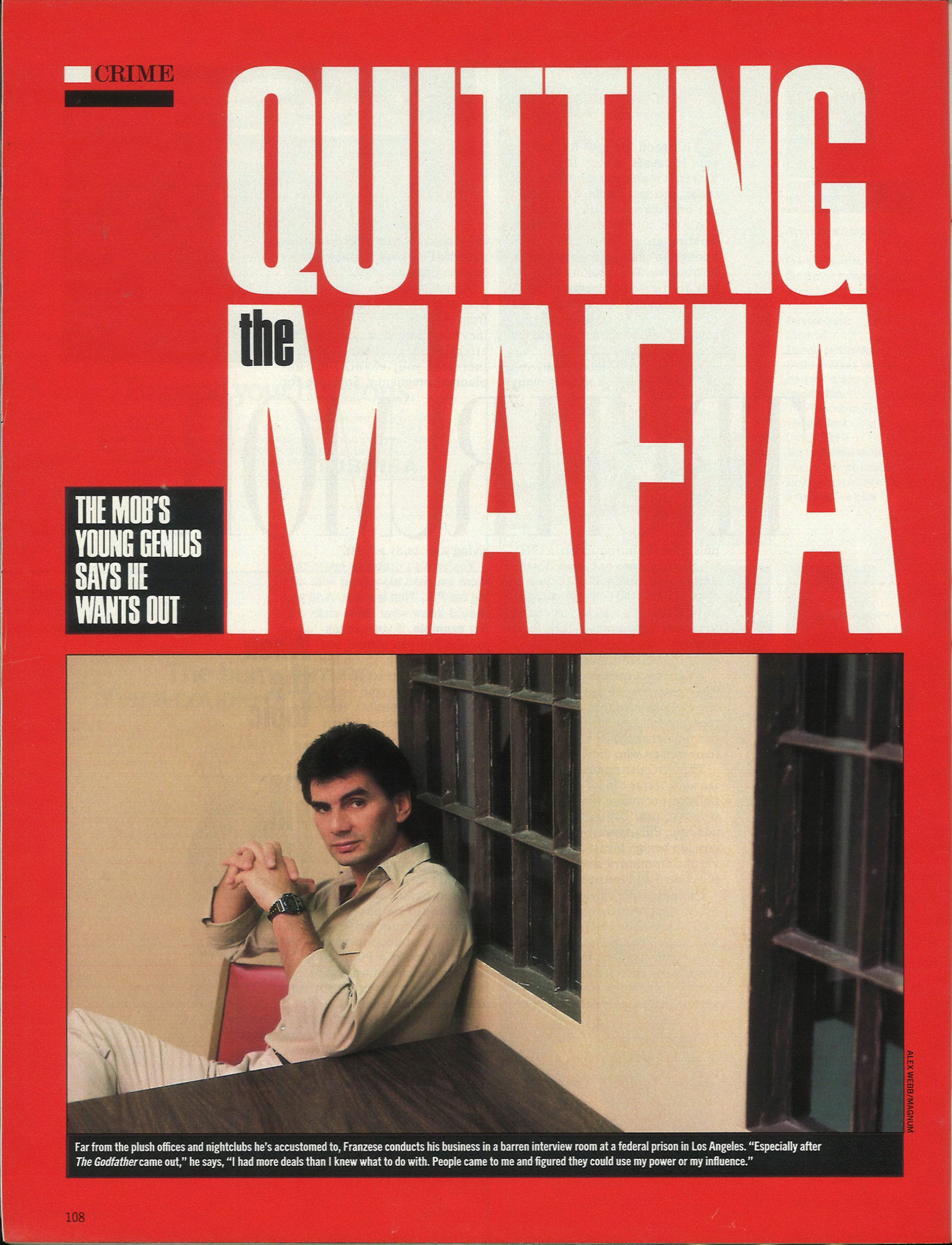
Franzese Featured in LIFE Magazine
In a feature story, Franzese declares he is quitting the mafia.
“The pair cheated federal, state and local authorities out of an estimated $1 billion in gasoline excise taxes from 1981 to 1985.
‘I remember the first time Iorizzo comes in with three boxes, these little crates.
He says, “It’s a couple weeks’ take-about $270,000 or $280,000 [worth $725,000 or $752,000 today] .’
He accepted the sentence and the $15 million [worth $40.7 million today] restitution. In exchange he won immunity from prosecution on crimes that might be revealed by ongoing investigations in seven other jurisdictions.” 101
12/18/1987
Walters Lawsuit Tossed
A federal judge in New York dismissed a $500,000 lawsuit Walters and Bloom had filed against Brent Fullwood because, the judge ruled, “we decline to serve as the paymaster of the wages of crime, or referee between thieves.” 102
12/23/1987

Big Ten Expels Walters and Bloom
A federal judge signed a consent decree in which Walters and Bloom agreed never again to deal with a Big Ten athlete. 103
3/2/1988

Walters and Bloom Indicted in Alabama
Walters and Bloom were indicted by a Tuscaloosa County, AL grand jury on misdemeanor charges of tampering with a sports contest, commercial bribery, and deceptive trade practices for their dealings with McKey and his Alabama teammate, Terry Coner, during the 1986-87 basketball season. 104
3/15/1988

Valukas Squashes Harmon Investigation
U.S. Attorney Anton Valukas uses his Justice Department connections to prevent the Iowa legislature from investigating Ronnie Harmon’s Rose Bowl fumbles. 105
Valukas and his team were and remained intent on protecting their star witness from anything that could undermine Harmon’s credibility with the jury.
3/25/1988
Athletes Agree to Reimburse Colleges to Avoid Indictment
At least 10 football and basketball players agreed to reimburse their universities for part of their scholarships to avoid federal prosecution for dealing with Walters and Bloom. 106
4/5/1988
Franzese Agrees to Testify Against Walters
Michael Franzese agreed to testify against Walters and Bloom in the ongoing federal grand jury investigation in Chicago.
In 1989 court testimony, Franzese testified under oath:
Q. Mr. Franzese, in connection with that order of immunity, a copy of which was entered by — or the matter was entered by Judge Grady, what did you understand would be used — could be used against you in a subsequent proceeding?
A. I understand that any information that I were to give could not be used against me in any subsequent proceeding. However, any information that was derived from independent sources could be used against me in a prosecution.
Q. Meaning that you could still be prosecuted for the matters which you’re testifying or information that you have given, but your own testimony could not be used against you; is that correct?
A. That’s correct. 107
Full Michael Franzese testimony transcript is here: http://1986rosebowl.com/wp-content/uploads/2023/11/1989-03-14-case-88-CR-00709-Franzese-testimony-transcript-TITLE-OCR.pdf
5/2/1988
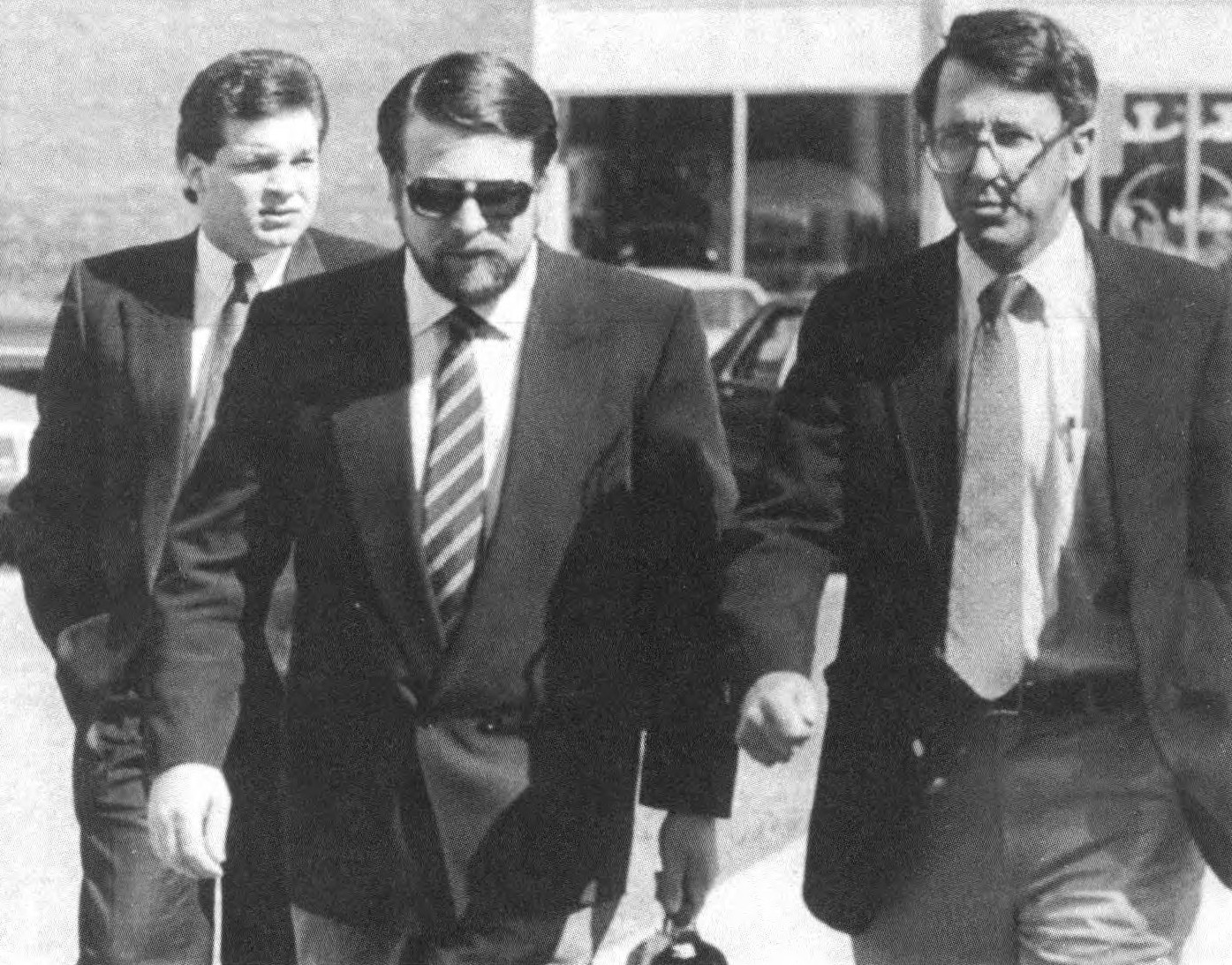
Bloom Pleads Guilty, Flips on Walters in Alabama
Lloyd Bloom plead guilty to one count of deceptive trade practice and agreed to testify against Norby Walters at the scheduled May 9 trial.
As punishment, Bloom must wash state troopers’s cars for one week while staying at a hotel of his choice and at his expense.
Valeska defended the state’s deal, saying, “Without Bloom we can’t get the money man, Walters.” 108
5/15/1988
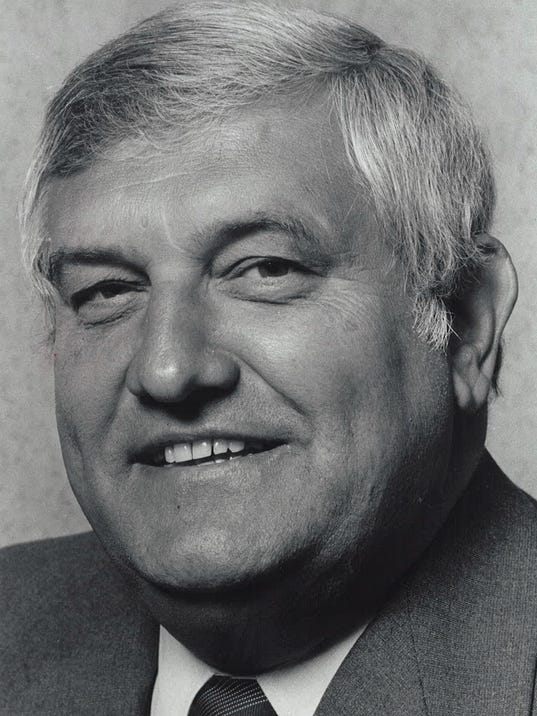
Big Ten Commissioner Duke Relates 1986 Rose Bowl Post-Game Iowa Locker Room Altercation
In an interview with the FBI, Big Ten Commissioner Wayne Duke related,
“[If it] hadn’t been for [Ronnie Harmon], Iowa would have beat UCLA.
…his teammates were upset about it.
There was an altercation in the locker room between the players.” 109
6/1/1988

Walters Takes Plea Deal In Alabama
Walters agreed to a $203,500 settlement with the University of Alabama for his dealings with McKey and Coner.
He also signed a consent decree agreeing that he would never again deal with a college-eligible athlete from the SEC. 110
6/21/1988

Fullwood, Harmon, and Palmer Take Plea Deal To Avoid Indictment
Brent Fullwood, Ronnie Harmon, and Paul Palmer of Temple were among the more than 40 athletes who have agreed to the pre-trial diversion program to avoid indictment by the federal grand jury.
The athletes also agreed to testify against Walters and Bloom in any subsequent trial and perform 100 to 250 hours of community service. 111
8/24/1988

Walters and Bloom Indicted
Norby Walters and Lloyd Bloom were indicted by a federal grand jury in Chicago on charges of racketeering, extortion, wire fraud, and mail fraud stemming from their dealings with athletes and others.
Michael Franzese, Colombo family mafia crime boss, was named as an unindicted silent partner in the sports agency company.
Also indicted were athlete Cris Carter and agent David Lueddeke. Carter was charged with mail fraud and obstruction of justice. Lueddeke was charged with perjury and obstruction of justice resulting from the agent’s $5,000 payment to Carter in October 1986.
Walters and Bloom face penalties of up to 70 years in prison and fines of up to $2 million each. 112
8/28/1988

FBI: Mob Gambling Annual Income $26-30 Billion (worth $67-77 billion today)
FBI Agent Frank Storey told the organized crime commission at hearings in New York City in 1985 that gambling was the largest single source or mob income in the Northeast and generates half of all organized crime revenues.
That translated to about $1.5 billion (worth $3.9 billion today) a year from numbers games and sports betting rings in the New York area alone.
The FBI, while reluctant to hang a dollar figure on illegal gambling, has acknowledged that some organized crime experts have put the sum at “between $26 billion and $30 billion (worth $67 billion and $77 billion today) annually.”
“A substantial part” of that money, the commission reported in 1985, is controlled by organized crime families and is used to corrupt law officials as well as finance rackets.
The FBI’s Chicago spokesman, Robert Long, said, “It [gambling] is the prime moneymaker for the mob.” 113
8/31/1988
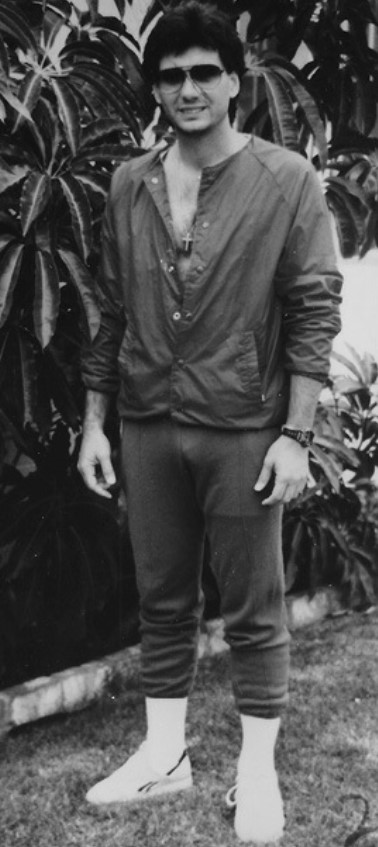
Franzese Transferred to Minimum Security Prison
Franzese, serving a 10-year sentence on racketeering and embezzlement charges, was transferred to a minimum security federal camp in Boron, CA from a medium security prison due to a “writ to testify” in the Walters and Bloom trial in the Northern District of Illinois U.S. District Court. 114
11/17/1988
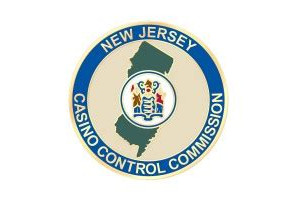
Walters Banned From Atlantic City Casinos
The New Jersey Casino Control Commissioner banned Walters from doing business with his music acts at Atlantic City casinos as long as he remains under federal indictment. 115
2/22/1989

FBI Interviews Franzese About Murders
FBI Interview Report:
“FRANZESE explained that LARRY CARROZZA was associated with ANDREW RUZZO, a captain in the COLOMBO family.
He stated that CARROZZA was not a “made member” of the COLOMBO family. He stated that he was close to CARROZZA, and that
CARROZZA baptized his son, JOHN.
He added that at the meeting, he was told that CARROZZA was dealing drugs in Brooklyn and was having an affair with his sister. FRANZESE stated that be was shocked to hear this information, and that he immediately
defended his sister.
He stated that within a short period of time, CARROZZA was killed.” 116
2/24/1989
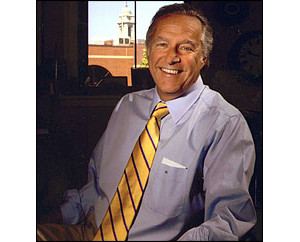
Walters Sells Entertainment Agency
Norby Walters sold his once-lucrative entertainment agent business to his former partner Jerry Ade. 117
3/1/1989
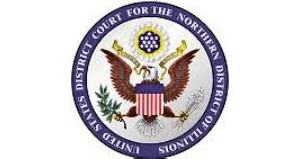
Jury Selection Begins in Walters and Bloom Trial
Jury selection got underway in a U.S. District Court in Chicago. Presiding federal judge George Marovich warned defense attorneys, “This is a criminal trial. We’re not going to have a morality play (about college athletics).” 118
3/3/1989
Franzese to Testify
The U.S. Government revealed that mafia crime boss Michael Franzese would testify that he was a silent partner with Walters in the sports agency business.
Franzese will testify that his role was to help Walters “obtain and retain” clients by “exploiting (his) considerable reputation as a member of organized crime.” 119
3/5/1989
Harmon Says He Never Fit In at Iowa
Speaking with assistant U.S. attorney Howard Pearl and FBI special agent George Randolph, Ronnie Harmon stated that as a black kid from the streets of New York, he never believed that he fit in at Iowa.
He also related that his Iowa career had ended bitterly when his teammates, led by quarterback Chuck Long, pointed fingers at his indifferent attitude after losing four fumbles and dropping a touchdown pass in the Rose Bowl. 120
3/6/1989

Walters and Bloom Trial Opens
Though Walters and Bloom dealt with 57 athletes from 32 universities, just seven schools involving 10 athletes are named in the indictment as victims of the mail and wire fraud.
In addition, the government will try and prove Walters and Bloom used Franzese’s reputation as a mob boss to threaten at least four players who reneged on contractual agreements. 121
3/7/1989

Harmon Received Over $54,000 From Walters
In opening testimony, Ronnie Harmon testified that he received over $54,000 (worth $152,000 today) from Norby Walters and Lloyd Bloom. 122
Harmon also testified:
Q. Did you know at the time that you signed these agreements with Mr. Walters and Mr. Bloom and took money from them that doing so would make you ineligible to compete on the University of Iowa football team and to receive your athletic scholarship?
A. Yes.
Q. How did you know that?
A. Because it was stated in the rules, and we had — we had a team meeting on it that we’re not supposed to sign early and it’s illegal, or we lose our scholarship.
Q. At the time you signed these agreements with Mr. Bloom and Mr. Walters, did you know that you were going to have to lie to the University of Iowa in order to be able to play again and obtain your athletic scholarship for your senior year?
A. Yes.
Q. How did you know that?
A. Because I knew it was illegal to sign early. They already told me. It’s already been stated in the rule book.
Q. How did you know that when you went back in the fall that you were going to have to lie to the university to be able to play again and to receive your senior year athletic scholarship?
A. Because I signed early in March. I knew it was wrong. And I knew to conceal — we had to conceal it because that’s what we agreed on.
Q. And did you know what you were going to have to do when you went back to the university in August?
A. Yes.
Q. What was that?
A. To lie again. 123
Full Ronnie Harmon testimony transcript is here: http://1986rosebowl.com/wp-content/uploads/2023/11/1989-03-07-case-88-CR-00709-Harmon-testimony-transcript-TITLE-OCR.pdf
3/8/1989
Harmon Testifies He Lied to NCAA, Big Ten, and Iowa
Q. Let me ask you again to focus your attention on Rule 1, and read it if you would.
A. “NCAA rules forbid an athlete to agree, either orally or in writing, to be represented by an agent or organization in marketing his or her athletic ability or reputation until after completion of the last intercollegiate contest, including post-season games. This includes entering an agreement that is not effective until after the last game.”
Q. I ask you, if you would, to just read the first sentence of Rule 4.
A. “An athlete — NCAA rules forbid an athlete to accept expenses or gifts of any kind, including meals and transportation, from an agent or anyone else who wishes to provide certain services to the athlete.”
Q. When you were in Mr. Walters’ office in March of 1985, you knew and understood those rules; is that correct?
A. Yes.
Q. When you went back to school in August of 1985, did you in fact conceal from the university the fact that you had signed an agreement with and received money from these agents, Mr. Bloom end Mr. Walters?
A. Yes. 124
Full Ronnie Harmon testimony transcript is here: http://1986rosebowl.com/wp-content/uploads/2023/11/1989-03-07-case-88-CR-00709-Harmon-testimony-transcript-TITLE-OCR.pdf
3/8/1989

Judge’s Comment on Harmon: Not a Victim
Session in Judge’s chambers, no jury present.
Presiding Federal Judge George Marovich:
“Harmon, nobody is putting up as the victim.
They are unindicted or deferred, or whatever, co-conspirators.
l don’t suppose anybody has lost sight of that…” 125
3/8/1989

Devon Mitchell Took $2,000 Cash From Walters
Former Iowa defensive back Devon Mitchell testified that he took $2,000 in cash from Norby Walters and Lloyd Bloom several months before his final college season in 1985.
Mitchell also agreed to accept $200 per month in exchange for signing a contract with the sports agents, in violation of NCAA eligibility rules.
Mitchell first heard from Bloom after Harmon set him up with a telephone interview with the agent in June, 1985. 126
Full Devon Mitchell testimony transcript is here:
http://1986rosebowl.com/wp-content/uploads/2023/11/1989-03-09-case-88-CR-00709-Mitchell-testimony-transcript-TITLE-OCR.pdf
3/9/1989
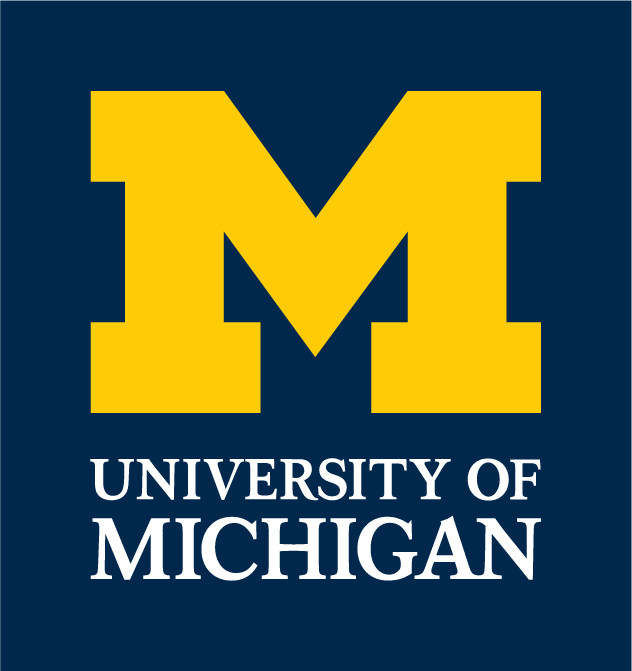
Perryman Testifies of Bloom Threat
Former Michigan running back Robert Perryman testified sports agent Lloyd Bloom threatened that unless Perryman dropped contract demands, Bloom would cause the Big Ten to invalidate Michigan’s prior year conference championship. 127
3/13/1989
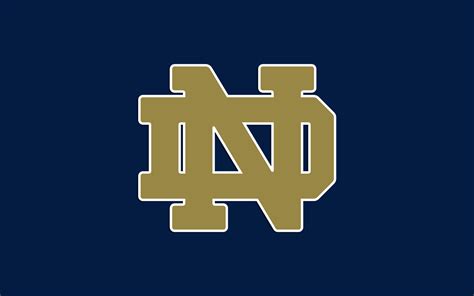
Notre Dame’s Banks and Miller Took Walters Cash
Former Notre Dame football players Alvin Miller and Robert Banks testified that they took $2,500 and $5,000 respectively from Norby Walters.
Both signed post-dated contracts with the sports agents that, if known, invalidated their NCAA eligibility.
Including monthly payments during his senior season, Banks took a total of $7,000 from Walters. 128
3/14/1989
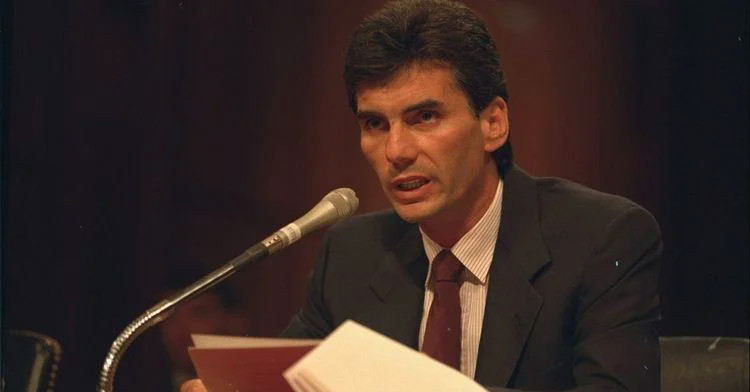
Michael Franzese Testifies Against Walters
Michael Franzese, a captain in the New York Colombo crime family, testified that he had known Walters for over 30 years and had been a partner in Walters’s entertainment agent business for over 14 years.
Franzese also testified that he provided $50,000 cash to start Walters’s sports agent business in 1985 in exchange for 25% of the profits. 129
Full Michael Franzese testimony transcript is here: http://1986rosebowl.com/wp-content/uploads/2023/11/1989-03-14-case-88-CR-00709-Franzese-testimony-transcript-TITLE-OCR.pdf
3/15/1989
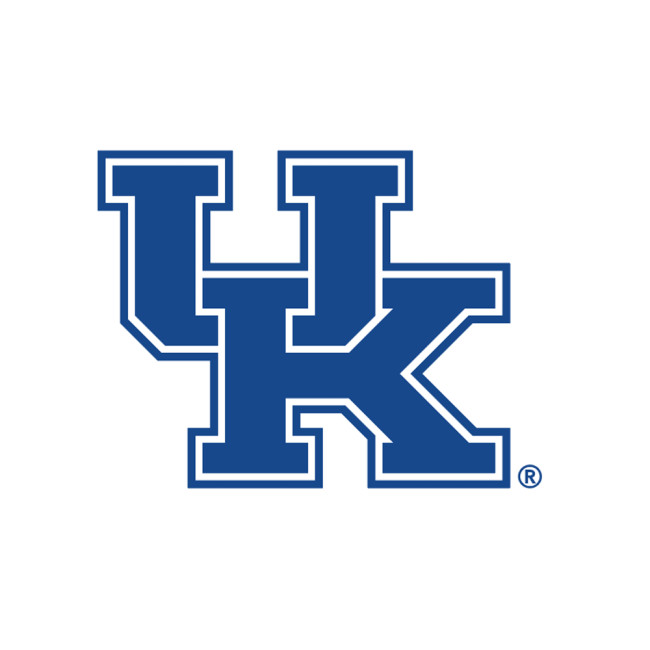
Maurice Douglass Testifies Bloom Threatened to Break His Legs
Former Kentucky football player Maurice Douglass testified that sports agent Lloyd Bloom told him that if didn’t meet Bloom’s demands, “he’d have somebody break my legs.” 130
3/15/1989

Rivers Took $2,500 Cash From Walters
Former Michigan defensive back Garland Rivers testified that he took $2,500 in cash from Norby Walters and Lloyd Bloom when he signed a contract with them prior to his senior year.
In total, Rivers took up to $8,000 from the sports agents.
In addition, he received $1,000 from the agents for setting up a meeting with his teammate Robert Perryman. 131
3/16/1989
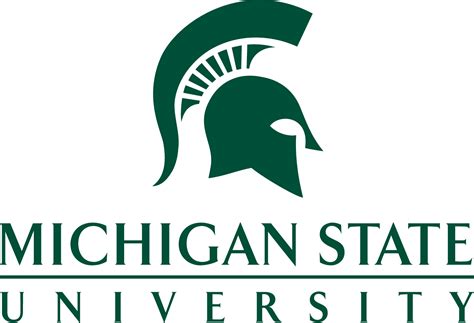
Ingram Took $7,500 Cash From Walters to Sign Contract
Former Michigan State wide receiver Mark Ingram testified that he took $7,500 in cash from Norby Walters to sign a contract before his senior year.
He also testified that Walters threatened to “bring down” the Michigan State football program if Ingram did not follow the contract. 132
3/21/1989

Woods Testifies Walters and Bloom Threatened His Younger Brother
Former University of Pittsburgh linebacker Tony Woods testified that Norby Walters and Lloyd Bloom threatened to end the career of Wood’s younger brother.
Woods also testified that he took $2,500 in cash and $250 a month to sign a contract with the sports agents prior to his senior year. 133
3/21/1989

Simmons Took $4,000 From Walters; Bloom Threatened Gay
Former Texas running back Edwin Simmons testified that he took $4,000 in cash to sign a contract with the sports agents prior to his senior year.
He also testified that his teammate Everett Gay, who took $2,500 in cash to sign a contract, was threatened by Bloom.
Simmons testified that when Gay was considering switching agents, Bloom told him that if Gay switched, “we can phone to Las Vegas and get some people to come down and make sure that Everett Gay never plays football again.” 134
3/22/1989

Palmer Took $4,000 From Walters; Bloom Stole $125,000 From Palmer
Former Temple running back Paul Palmer testified that he took $4,000 in cash from Norby Walters to sign a contract with the sports agent.
He also testified that after Palmer signed with the Kansas City Chiefs, Lloyd Bloom spent $125,000 of Palmer’s money on Bloom’s personal expenses, including $82,242 to lease a Rolls Royce. 135
3/27/1989

Iowa’s Becker: Walters’ “Loans” are Compensation
Iowa’s Samuel Becker testified that the cash “loans” received by Ronnie Harmon and other athletes are compensation under NCAA and Big Ten rules, thus making the athletes ineligible.
Q. You mentioned that the NCAA and Big Ten and University of Iowa had an interpretation of the term “compensation,” and could you tell us what that is, please and whether this includes loans?
A. Yes. If any loan or even a loan of an automobile that’s related to athletic ability that is not equally available to every other student is concerned, compensation under both Big Ten and NCAA rules and the — all the interpretations that we have had. 136
Full Samuel Becker testimony transcript is here:
http://1986rosebowl.com/wp-content/uploads/2023/11/1989-03-27-case-88-CR-00709-Becker-testimony-transcript-TITLE-OCR.pdf
4/3/1989
“New Edition” Manager Testifies of Walters Extortion Via Franzese Threats
William Dern, manager of the New Edition music group, testified that when the group considered changing from Walters to different booking agents, they were threatened.
Dern described a meeting with Walters and an unidentified “mob guy” that caused the managers to abruptly cancel plans to dump Walters’s booking agency.
Dern testified that, “The guy [with Walters] was a mob guy, and he [Smith] didn’t want to be involved with anybody like that.” 137
4/13/1989

Walters and Bloom Guilty
Norby Walters and Lloyd Bloom were convicted of extortion, racketeering, mail fraud, and racketeering conspiracy.
FBI agent George Randolph, who led the investigation, said, “We thwarted the mob from getting a foothold in the NFL. This thing was headed for a bigger picture. The Colombo crime family that backed these guys is very big on gambling.”
Walters and Bloom dealt with 58 college football and basketball players from 32 colleges from 1985 to 1987. The agents’ activities and threats were first exposed by an Atlanta Journal-Constitution story March 12, 1987.
Four days later, the unsolved beating of rival sports agent Kathy Clements in Skokie, Ill., precipitated the federal investigation, according to the FBI and prosecutors.
“I don’t think it’s a coincidence,” said Chicago sports agent Steve Zucker, who was Ms. Clements’s associate at the time of the beating. “We had taken some of [Walters’s and Bloom’s] clients, and it was pretty obvious that Kathy was cooperating with the Atlanta Constitution’s investigation. It’s scary what happened.”
The jury acquitted Walters and Bloom of defrauding two other Big Ten schools, Iowa and Michigan State. 138
5/15/1989

Pearl Resigns, Joins Webb
Assistant U.S. Attorney Howard Pearl, a key member of the team that prosecuted Walters and Bloom, resigns to join Dan Webb, Bloom’s defense attorney, in private practice.
Pearl later joined Webb on the Iran-Contra Special Prosecutor team that won the conviction of former Navy Rear Admiral John Poindexter. 139
5/18/1989
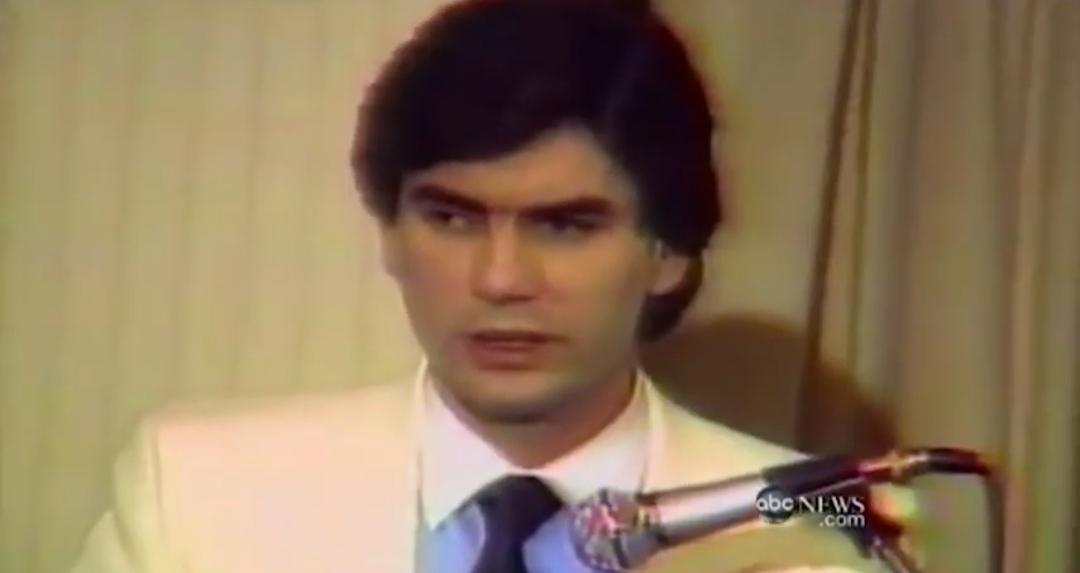
Michael Franzese Agrees to Testify Against the Mob, Released From Prison
Michael Franzese signs a one-year cooperation agreement with the government. It compels him to cooperate on any case filed through April 30, 1990.
In exchange for the agreement to testify against the mob, less than three months after testifying against Walters and Bloom, Franzese is released from federal prison. 140
Franzese served about four years of his 10-year term.
Walters’s and Bloom’s attorneys filed with the court to show that his early release was in exchange for his testimony against Walters and Bloom.
At the Walters and Bloom trial, Franzese testified that he would get a maximum of 28 days reduction in his 10-year sentence in exchange for his testimony. 141
6/15/1989

Harmon Stops Talking to the Press
Ronnie Harmon stops talking to the press and will conduct no interviews. 142
11/13/1989

Valukas Announces Resignation
U.S. Attorney Anton “Tony” Valukas, who led the prosecution of Walters and Bloom, announced he was resigning and returning to private practice. 143
1/7/1990
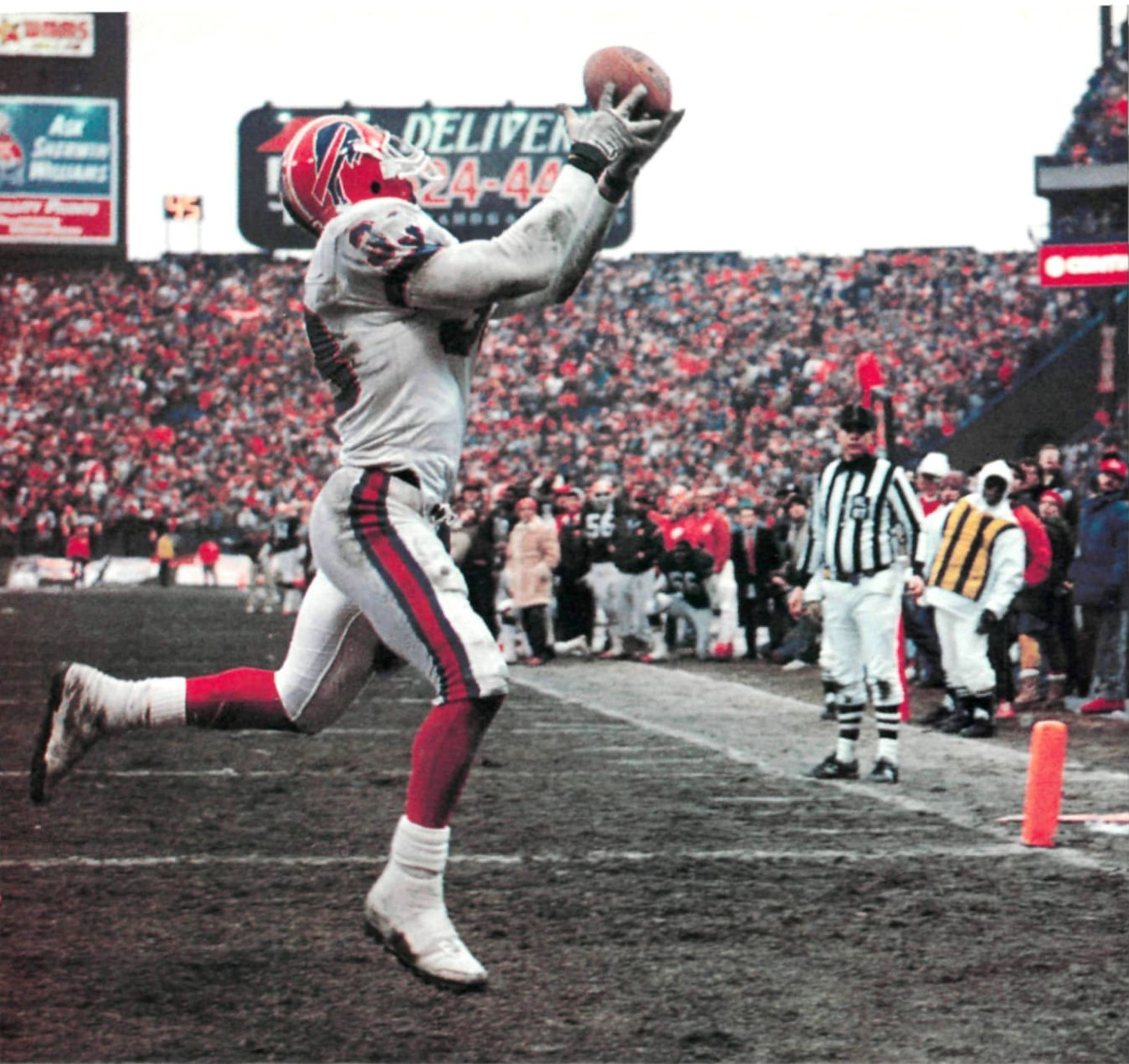
Bill’s Harmon Drops Last-Second, Game-Winning Touchdown Pass in Playoffs
“Most of all. though. the Browns won because the Bill’s passing attack faltered at the end of the game.
On second down from the Cleveland 11 with 14 seconds left, Buffalo running back Ronnie Harmon dropped a pass from his quarterback, Jim Kelly, in the end zone.” 144
“And if we tell you the game is on the line, you make sure you don’t catch that ball” – Michael Franzese, mafia capo 145
Cleveland covered the spread. 146
2/1/1990

Harmon Dropped by Bills
Less than a month after dropping a game-winning touchdown pass in the final seconds of the AFC Divisional Playoff game against the Browns, 1996 first-round (2nd running back, 16th overall) pick Ronnie Harmon was left unprotected by the Buffalo Bills and released.
Harmon only had two fumbles in the 1989 season and was 12th in the league for running backs in yards per reception at 12.5.
“Ronnie Harmon, who dropped what would have been the winning touchdown pass in an AFC divisional playoff game, Friday was … left unprotected by the Buffalo Bills.
Harmon was one of several name players the Bills decided to make available under the NFL’s Plan B free agent system.” 147
9/17/1990
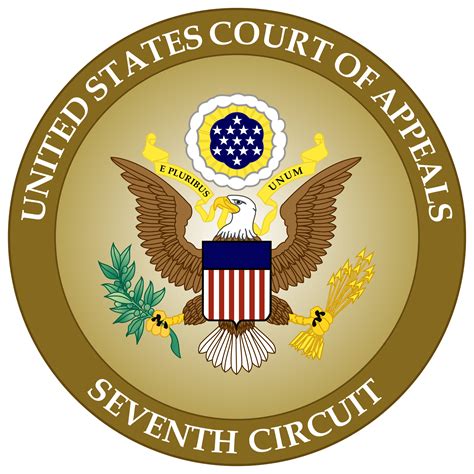
Walters and Bloom Verdict Reversed
The 7th U.S. Circuit Court of Appeals reversed the convictions of Norby Walters and Lloyd Bloom on a legal technicality and did not address the mail fraud, racketeering, or conspiracy counts.
In its ruling, the appeals court said [presiding U.S. federal judge] Marovich improperly refused to call certain testimony to the jurors’ attention during his [jury] instructions [prior to deliberations].
The appellate judges also said Bloom should have been given a separate trial, as he had requested. 148
This was a victory for both defense legal teams. The former was a win for Walters’ team, led by Robert Gold, and the latter for Bloom’s team, led by Dan Webb.
The appeals court overturning based on the omission of four words, “the advice of counsel,” in judge Marovich’s good faith instruction to the jury was viewed as a technicality.
The issue of a separate trial for Bloom had been a recurring objection and motion by Webb prior to and throughout the trial. It was clear that Webb considered it the best opportunity to win on appeal.
In the end, for the legal community, just about everybody won.
The U.S. Justice Department shut down the mafia’s operation to control college and pro athletes to fix games, so they won.
Valukas and his team got the conviction, so they won.
Webb and Gold got the guilty verdict overturned, so they won.
The only loser was Marovich, who had only been on the federal bench since April 1, 1988, less than a year before the trial. He had a very high profile case overturned, which is not a great way to begin your tenure.
10/15/1990
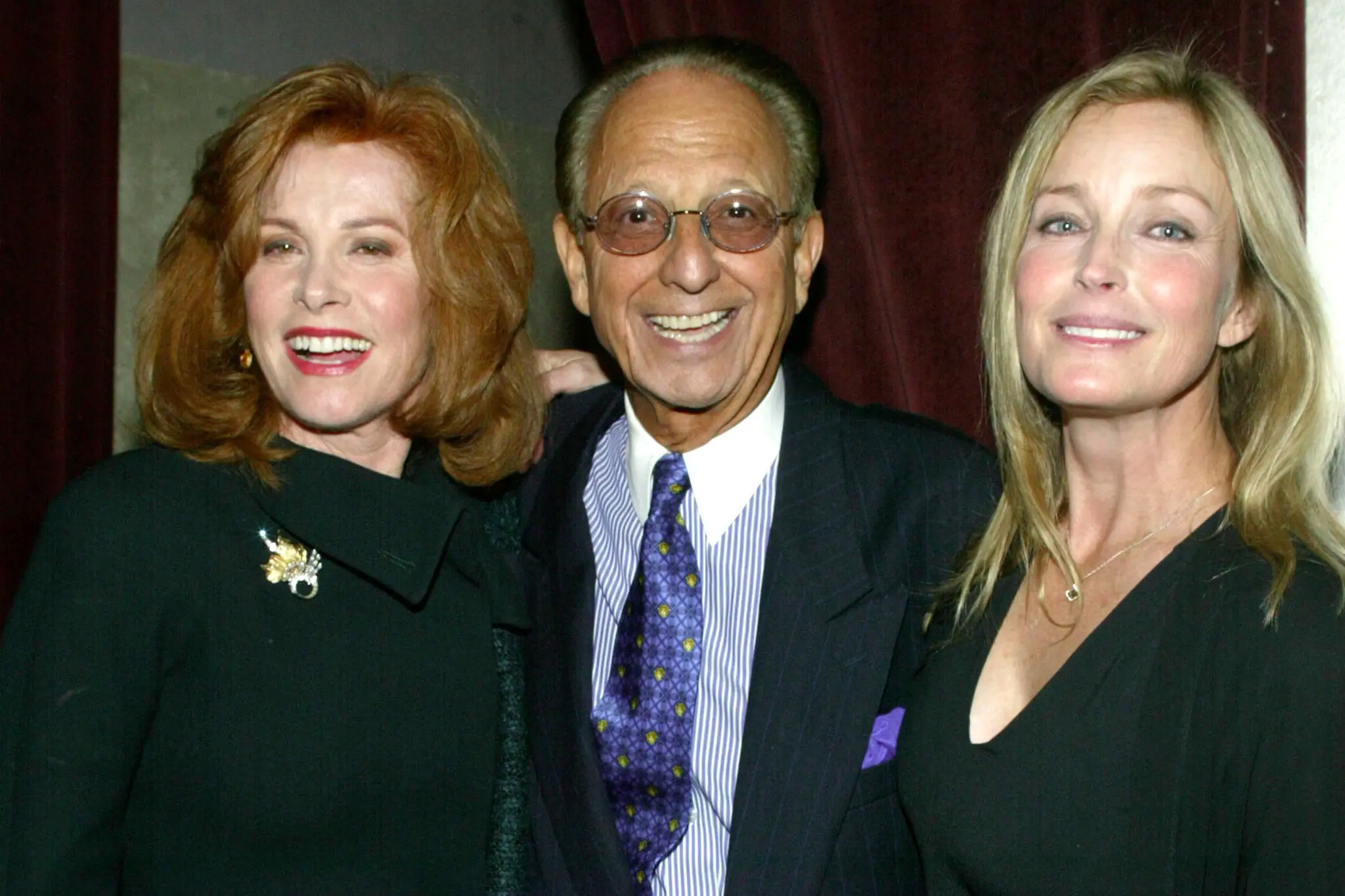
Walters Moves to Los Angeles
Norby Walters moves to Los Angeles for “early retirement.” 149 150
He lives in a large Westwood high-rise apartment overlooking Wilshire Boulevard.151
He hosts a weekly low-stakes poker game for Hollywood actors and celebrities.
He also hosts an annual B- and C-List Oscars viewing party which causes him additional legal issues. 152
He has no job, no known income, yet lives a luxurious life rubbing shoulders with the Hollywood elite. 153
11/10/1990
Athletes Don’t Repay Scholarships
“More than half of the 42 former college athletes who agreed to repay scholarship money of which they defrauded their schools by signing contracts with agents Norby Walters and Lloyd Bloom have reneged on their pledges, a survey of the schools shows.
A Tribune survey of the 27 universities involved revealed that at least 22 athletes had failed to pay despite avoiding prosecution by signing the agreements with the U.S. attorney`s office in June 1988.” 154
1/1/1991
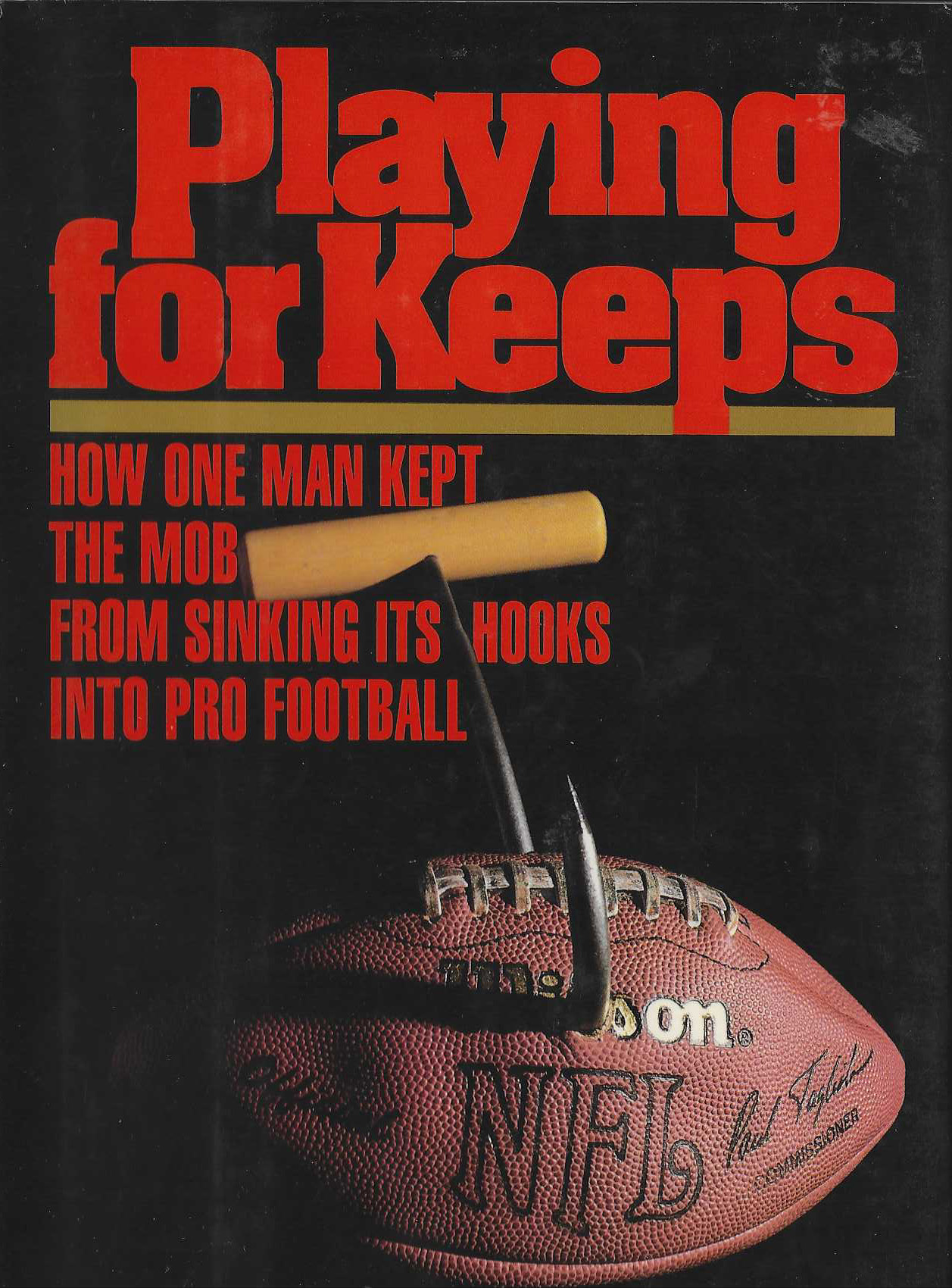
“Playing for Keeps” Book Released
Written by Chris Mortensen, it becomes the definitive work on the investigation, trial, and conviction of Norby Walters and Lloyd Bloom. 155
8/27/1992

Bloom Pleads Guilty, Gets Probation in Plea Deal
Bloom pleaded guilty to a charge of mail fraud and received five years probation and 500 hours of community service. 156
9/18/1992

Walters Pleads Guilty, Gets 1 1/2 Years in Plea Deal
Walters pleaded guilty to two counts of mail fraud and received 1 1/2 years in prison, a $25,000 fine, and 250 hours of community service. 157
6/30/1993

Appeals Court Tosses Walters Guilty Plea
A federal appeals panel tossed out the mail fraud conviction of former sports agent Norby Walters.
In Wednesday’s ruling, Appellate Judge Frank H. Easterbrook wrote that it was unclear if
the use of the mail had anything to do with Walters’ scheme or if he had any knowledge of any mailings.
The judges also questioned whether the schools had been defrauded because they apparently never were aware of the loss of the athletes’ amateur standing.
Although Walters had pleaded guilty to the mail fraud charge, the government retained the
right to try him on charges of perjury and obstruction of justice.
Bloom pleaded guilty to the single count [of mail fraud] with the understanding he could withdraw his plea if a federal appeals court found that Walters’ actions did not constitute mail fraud. 158
8/27/1993
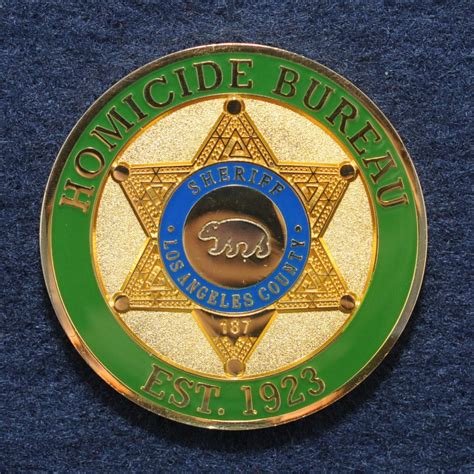
Bloom Murdered in Mob Execution Style Shooting
Less than two months after the final court action related to his conviction with Norby Walters of extortion, racketeering, conspiracy and mail fraud, Lloyd Bloom was found murdered.
“Bloom, 34, was found dead Thursday in his rented home on a bluff overlooking the Pacific in the high-priced Broad Beach section of Malibu.
He had multiple gunshot wounds in his upper torso, and there were no signs of a break-in or a struggle, said Lt. Joe Brown, commander of the Los Angeles County Sheriff’s Department’s homicide squad.
Ralph Cindrich, a Pittsburgh-based sports agent, said he felt “no surprise at all” in learning of Bloom’s death.
“Keep in mind the known Mafia people (linked to Bloom’s activities) and the number of people done wrong,” Cindrich said.” 159
9/30/1993

FBI Interviews Salvatore Miciotta About Franzese Involvement in Murders
FBI Interview Report:
“COLOMBO La Cosa Nostra (LCN) associate LARRY CARROZZA was murdered in Brooklyn, New York in 1983.
COLOMBO LCN Boss CARMIIIE “Junior” PERSICO approved the murder because CARROZZA became sexually involved with COLOMBO LCN member MICHAEL FRANZESE’s sister, had made her drug dependent and was himself selling and using cocaine. An attorney had advised FRANZESE that he had seen CARROZZA and FRANZESE’s sister sniffing cocaine at a Florida hotel.
FRANZESE insisted that CARROZZA had to be killed and that he wanted to do it himself. ANGELLINO and TOMASELLO acknowledged FRANZESE’S request but directed MICIOTTA to kill him.
MICIOTTA added that CARROZZA’s affair with FRANZESE’s sister was a pretext and that CARROZZA was actually killed because FRANZESE and the COLOMBO LCN Family wanted to take over CARROZZA’S gasoline tax scam business.” 160
9/15/1995
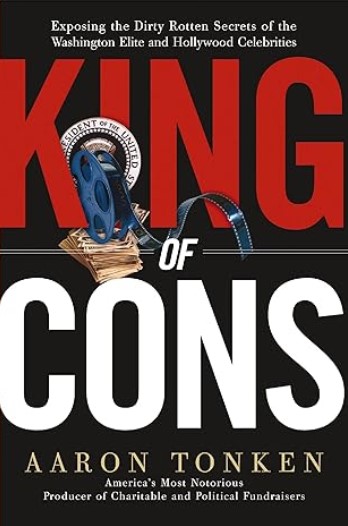
Walters On Need for Fundraising License: Fuhgeddaboudit
Regarding the need for a commercial fundraising license, Walters exclaimed, “Fuhgeddaboudit. They’ll never know. Just make sure you cover you’re ass. As long as the charities are happy, you’ll be fine.” 161
10/16/1995

Walters Involved With LA Fundraising Events
I invited and paid for a few others I was hoping to impress and get in my corner for other events—including Norby Walters and his wife Irene (whom he called “Tootsie”).
I believed that Norby was a well-connected guy who could deliver artists to perform for free and that he would be useful when we were planning the big concert with the Nashville VIPs. Bad decision. He was connected, all right, but not to the kind of people you’d want to meet.
Looking back, I’d have to say that if there was one guy I never should have been mixed up with, it was Walters. And that’s picking through a very sordid lot.
Norby was a fast-talking, unattractive man with a big nose and a mouth to match.
He drove a Bentley and loved to brag to me about how often he cheated on Tootsie.
Norby, typically, would scream rather than talk, half the time in Yiddish, whether you were Jewish or not. He was insulting and obnoxious.
A friend of mine used to say that “whenever Norby Walters exits a room, he leaves a trail of anti-Semites behind him.” 162
12/12/1997
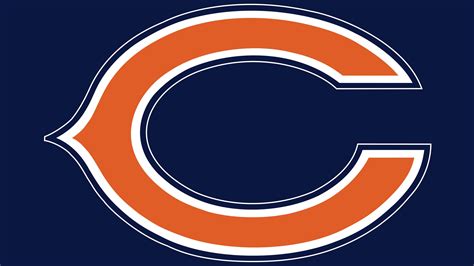
Harmon Finishes Career with the Chicago Bears
In poetic irony, Ronnie Harmon landed with his last NFL team, the Chicago Bears, after bouncing around the league since his time with San Diego.
Chicago was the site of the 1989 trial of Norby Walters and Lloyd Bloom, the two mafia-linked sports agents who paid Harmon over $54,000 (worth $147,000 today) during his senior year prior to and after the 1986 Rose Bowl.
The two agents spent more than $800,000 (worth $2,172,000 today) in cash payoffs, travel, meals and entertainment to college senior athletes headed for the NFL.
Michael Franzese, the mafia capo who provided the money and extortion muscle to Walters and Bloom, partnered in the sports agent company to build “an army” of college and pro athletes he could use to fix games for gambling.
Franzese testified against Walters and Bloom at the trial.
Franzese, who was serving a 10-year sentence on a plea deal, was released soon after his testimony.
Franzese later admitted that he fixed both college and pro games.
Walters and Bloom were convicted of extortion, racketeering, and mail fraud. They were sentenced to five and three years, respectively.
Less than two months after the last court hearing in the case overturned Walters’ and Bloom’s convictions and subsequent guilty pleas, Bloom was murdered, mob execution style, in his luxury Malibu, California home with no signs of forced entry, struggle, or robbery.
Walters never spent a day in jail and ended up in Los Angeles hosting low-stakes poker games for actors and producing B and C list celebrity events.
Harmon finished his pro career with the Bears in 1997 and floated through a few high school and college assistant coaching jobs. He got fired from one college assistant coaching job for being too hard on the student athletes. 163
12/12/1997

Harmon on Rose Bowl: “I didn’t think it was that big of a deal.”
Ronnie Harmon was interviewed by the Chicago Tribune’s Melissa Isaacson, a 1983 Iowa graduate. 164
“And everywhere Harmon goes, there always seems to be the long shadow of the 1986 Rose Bowl.
Until Thursday, in the quiet of the Bear’s dressing room, the 33-year-old Harmon had not spoken to the media in eight years…
‘…I’ll sit down and talk as long as they don’t personally attack me,’ he said.
‘I had a dropped pass in the end zone and (four first-half) fumbles,’ he recalled.
‘I just honestly didn’t think it was that big of a deal.’ ” 165
1/2/2000
Marovich Assumes Senior Status
U.S. Federal Judge George Marovich, who presided over the Walters and Bloom trial, assumed Senior Status (semi-retirement) with a 25% case load. 166
7/23/2002
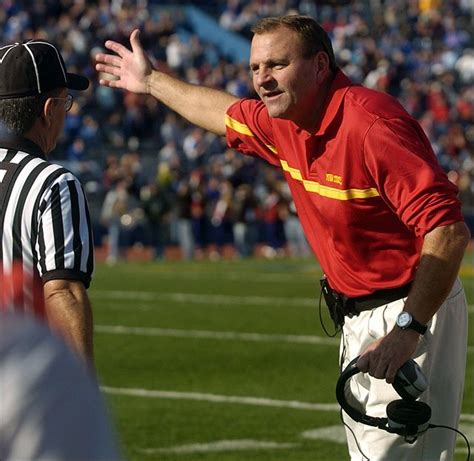
Ex-Iowa Coach McCarney on Harmon
Dan McCarney, Iowa defensive line coach in the 1986 Rose Bowl and at the time Iowa State head coach, appeared on the July 23, 2002 episode of HBO Real Sports with Bryant Gumbel.
“It was so uncharacteristic of him,” McCarney said.
“It was a shock to all of us on the sideline.
“Harmon had great ball security, tremendous speed, and his hands were as great as anyone I’ve seen in a collegiate running back.
“To this day, I can’t figure It out.” 167
7/23/2002
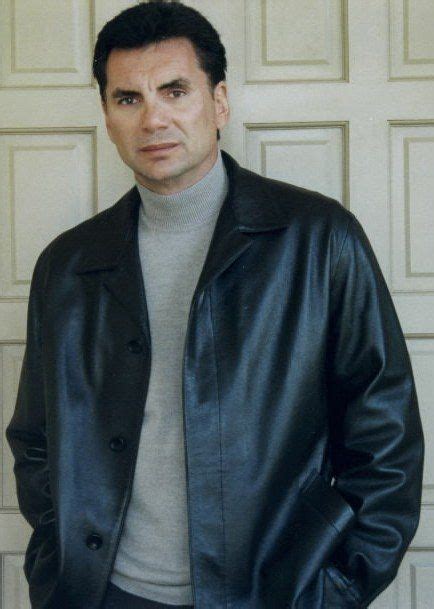
Franzese: Harmon Threw the Rose Bowl
Franzese appeared on the July 23, 2002 episode of HBO Real Sports with Bryant Gumbel.
Franzese was interviewed by correspondent Bernard Goldberg while video replays of Harmon’s fumbles were shown.
Franzese: It doesn’t look good, that’s for sure. And I would certainly have my suspicions.
Goldberg: Which are?
Franzese: He threw the game. 168
2/3/2003
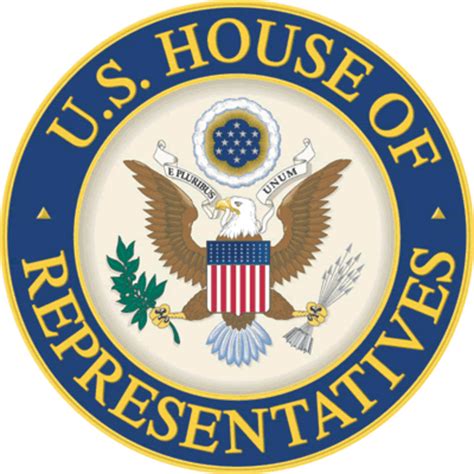
U.S. House Holds Hearings on the Sports Agent Responsibility and Trust Act
“The multi‐million dollar value of professional athletes’ salaries, signing bonuses, and endorsement contracts has resulted in a proliferation of questionable ethical practices by some sports agents more concerned with lining their pockets than the welfare of those they are supposed to represent.
These people are willing to break the rules in order to sign promising student athletes to representational contracts. They are willing to do this because the fees that accompany the
representation of a professional athlete are considerable, and the agent will risk little consequence in comparison to the
athlete or the school.” 169
1/26/2004

Walters Lacks Permit For Fundraising
Norby Walters lost his long-running affiliation with Martin Scorsese’s Film Foundation after they pulled out as beneficiary of Walters’s annual event after being questioned by California law enforcement officials.
Walters lacks the proper permit for fundraising in California.
In financial statements filed with the city of Beverly Hills, Walters reported paying himself a fee of $10,000 in 2002; a similar fee was recorded for an unnamed person on last year’s statement.
Speaking on Sunday, Walters acknowledged making a modest profit from his own annual gala in most years.
“I don’t have a problem being compensated,” Walters said. “The money that goes to me is whatever might be left over. From $8,000 to $14,000.”
Walters confirmed that he wasn’t registered with the state as a charitable fundraiser, but said he filed annual financial statements with the city of Beverly Hills.
A representative of the Beverly Hills Police Department’s Solicitations Advisory Commission said it didn’t have any record of a permit application or financial statement from Walters for the 2001 gala. 170
2/15/2006
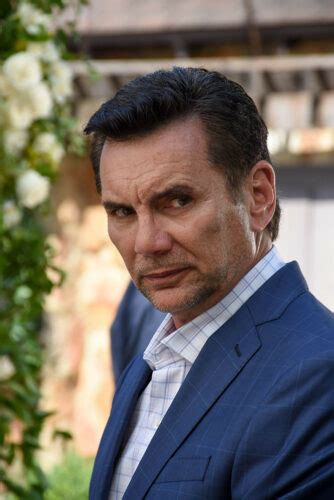
Franzese Admits Fixing Games
Q: Jim Rome: Did you ever fix a game?
A: Franzese: Yes. Absolutely.
Q: Jim Rome: Professional?
A: Franzese: Professional and college.
Q: Jim Rome: “[The athlete] did something to lose a team a game?
A: Franzese: Yes
Q: Jim Rome: How many times were you involved in fixing a game?
A: Franzese: Several times 171
12/15/2017
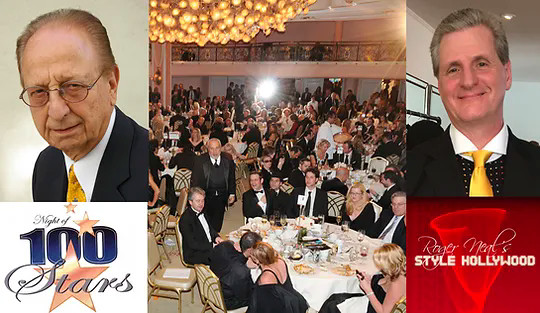
Walters Cancels Long-Running B- and C-List Oscar Party
“In December, however, Walters shocked the stars, his pals, and even his longtime publicist Ed Lozzi, when he announced an abrupt end to his annual event.
“I have macular degeneration,” said Walters, “so it’s hard for me when I’m across the room or even up close to have facial recognition.”
“I’m just tired,” he added. “So I’ve come to the end of the trail. That’s all.”
This is the untold story of a legendary, often controversial event, its colorful promoter and sudden end, and how a little-known Hollywood publicist/manager/producer who started his party out of revenge is now expanding with ambitious plans to grow his Oscar night empire even more in the coming years.
The driving force behind that Academy Awards party, launched three years ago, is the title presenter of the Roger Neal Style Hollywood Oscar Viewing Black Tie Dinner Gala.
Neal says his party grew out of his annual gifting suite where for 22 years he brought in sponsors to give the star’s fashions, jewelry, trips, art and more in return for promotion.
Neal says this year, each star guest will get a bag of gifts valued at $23,000, including trips
to the Bahamas and a castle in Ireland.
Neal is now positioned to inherit many of Walters’ stars, sponsors and ticket buyers – but
there is no official hand-off. There was no love lost in recent years between the two
promoters.
Neal complained to Block & Tackle.biz two years ago that stars he invited were told if they
went to his party, they would no longer be welcome at Walters better known, higher
profile, more star-studded party.
Walters may have retired but he has not encouraged anyone to go to Neal’s event.
Walters has even retained rights to the name Night Of 100 Stars, which he is looking to
sell for $50,000 or more.
In 2004, Walters and the Night of 100 Stars was investigated by the state of California for failing to file proper disclosure documents about money it gave to charity, and money that was used to put on the event and pay Walters a fee.
The Film Foundation, run by director Martin Scorsese, with a board that included Steven Spielberg, George Lucas and Robert Redford, among others, had received about $400,000 from the events. When the investigation became public, Scorsese quickly cut all ties to the Night Of 100 Stars.
Walters admitted he did not file all the necessary paperwork with the state but then did so retroactively. After that Walters ended connections to any charity and just put the Oscar party on himself as a business.” 172
11/29/2022

Kathy Clements Named to the AD100 2023
In an ultimate irony, Kathy Clements ended up in Los Angeles running an award-winning interior design firm with one of her two sons.
They specialize in a clientele of entertainers and celebrities. As such, it’s highly likely that they have an overlapping network of contacts and customers with Norby Walters, who surrounds himself with those people professionally and socially.
Given their mutual clientele, it is probable that she and Walters have been at the same event, in the same room together.
It makes you wonder what goes through her mind when she looks across a room and sees the man who, with very little doubt, paid to have her stabbed and beaten unconscious in March of 1987.
“In the annals of design history, husband-and-wife collaborators are not uncommon, but a mother-and-son team is rare indeed.
Kathleen and Tommy Clements have built their powerhouse interior-design firm by crafting richly layered, finely curated, and eminently livable homes for many of the brightest luminaries in the notoriously fickle world of entertainment.” 173
Dates are specific where possible and provided by source material.
Some dates are estimated based on ambiguous reports or references. If estimated, the date is typically the 15th of the month, e.g. 6/15/1952.
- Sports Illustrated 8/3/1987 ↩︎
- Variety 2/19/2009 ↩︎
- “Playing For Keeps” p163 ↩︎
- Sports Illustrated 8/3/1987 ↩︎
- Case 88-CR-00709 transcript; Franzese direct, p1128 ↩︎
- Case 88-CR-00709 transcript; Franzese direct, p1146 ↩︎
- “I’ll Make You An Offer That You Can’t Refuse” p67 ↩︎
- New York State Liquor Authority Hearing p31 ↩︎
- Sports Illustrated 8/3/1987 ↩︎
- Case 88-CR-00709 transcript; Franzese direct, p1126 ↩︎
- Case 88-CR-00709 transcript; Franzese direct, p1151 ↩︎
- “Blood Covenant” p124 ↩︎
- Case 88-CR-00709 transcript; Franzese direct, p1148 ↩︎
- “Blood Covenant” p162 ↩︎
- New York Times 11/22/1981 ↩︎
- Newsday 12/6/1981 ↩︎
- Newsday 12/6/1981 ↩︎
- Case 88-CR-00709 transcript; Harmon cross, p210 ↩︎
- “Blood Covenant” p178 ↩︎
- Los Angeles Times 7/19/1987 ↩︎
- Case 88-CR-00709 transcript; Franzese redirect, p1277 ↩︎
- Case 88-CR-00709 transcript; Franzese direct, p1169 ↩︎
- “Playing For Keeps” p148 ↩︎
- The Kingston Whig Standard 11/16/2009 ↩︎
- “Playing For Keeps” p149 ↩︎
- Case 88-CR-00709 transcript; Franzese direct, p1169 ↩︎
- Case 88-CR-00709 transcript; Franzese direct, p1170 ↩︎
- Chicago Tribune 3/8/1989 ↩︎
- Chicago Tribune 3/8/1989 ↩︎
- “Playing for Keeps” p68 ↩︎
- “Playing for Keeps” p68 ↩︎
- “Playing for Keeps” p68 ↩︎
- Los Angeles Times 7/19/1987 ↩︎
- Wikipedia ↩︎
- “Playing for Keeps” p30 ↩︎
- “Playing for Keeps” p68 ↩︎
- “Playing for Keeps” p68 ↩︎
- “Blood Covenant” p255 ↩︎
- “Playing for Keeps” p68 ↩︎
- “Playing for Keeps” p149 ↩︎
- Case 88-CR-00709 transcript; Franzese direct, p1173 ↩︎
- Case 88-CR-00709 transcript; Harmon direct, p168 ↩︎
- Case 88-CR-00709 transcript; Harmon direct, p173 ↩︎
- “Playing for Keeps” p68 ↩︎
- “Playing for Keeps” p68 ↩︎
- “Playing for Keeps” p68 ↩︎
- Case 88-CR-00709 transcript; Franzese direct, p1184 ↩︎
- “Playing for Keeps” p68 ↩︎
- “Playing for Keeps” p68 ↩︎
- “Playing for Keeps” p68 ↩︎
- Newsday 12/19/1985 ↩︎
- Newsday 12/21/1985 ↩︎
- Los Angeles Times 12/30/1985 ↩︎
- “Playing for Keeps p69 ↩︎
- Des Moines Register 1/2/1986 ↩︎
- Atlanta Constitution 3/5/1989 ↩︎
- Atlanta Constitution 2/1/1998 ↩︎
- Case 88-CR-00709 transcript; Harmon cross, p237 ↩︎
- Case 88-CR-00709 transcript; Mims direct, p351 ↩︎
- Case 88-CR-00709 transcript; Mims cross, p395 ↩︎
- Newsday 3/22/1986 ↩︎
- Case 88-CR-00709 transcript; Harmon cross, p295 ↩︎
- “Playing For Keeps” p134 ↩︎
- Case 88-CR-00709 transcript; Harmon cross, p203 ↩︎
- “Playing For Keeps” p136 ↩︎
- Case 88-CR-00709 transcript; Franzese cross, p1225 ↩︎
- Sports Illustrated 8/3/1987 ↩︎
- “Playing For Keeps” p228 ↩︎
- “Playing For Keeps” p163 ↩︎
- Atlanta Constitution 3/12/1987 ↩︎
- Atlanta Constitution 3/5/1989 ↩︎
- “Playing For Keeps” p10 ↩︎
- “Playing For Keeps” p69 ↩︎
- Chicago Tribune 3/27/1987 ↩︎
- Atlanta Constitution 3/27/1987 ↩︎
- Atlanta Constitution 3/5/1989 ↩︎
- Atlanta Constitution 5/19/1987 ↩︎
- Atlanta Constitution 5/20/1987 ↩︎
- Atlanta Constitution 3/5/1989 ↩︎
- Chicago Tribune 6/10/1987 ↩︎
- Atlanta Constitution 3/5/1989 ↩︎
- Atlanta Constitution 3/5/1989 ↩︎
- Des Moines Register 6/28/1987 ↩︎
- 1972 Brown University Football Media Guide ↩︎
- 1973 Brown University Football Media Guide ↩︎
- 1974 Brown University Football Media Guide ↩︎
- 1975 Brown University Football Media Guide ↩︎
- Atlanta Constitution 7/15/1987 ↩︎
- Atlanta Constitution 7/16/1987 ↩︎
- Los Angeles Times 7/19/1987 ↩︎
- Atlanta Constitution 7/28/1987 ↩︎
- Atlanta Constitution 3/5/1989 ↩︎
- Atlanta Constitution 8/16/1987 ↩︎
- Atlanta Constitution 3/5/1989 ↩︎
- Atlanta Constitution 9/11/1987 ↩︎
- “Playing For Keeps” p135 ↩︎
- Atlanta Constitution 11/4/1987 ↩︎
- “Playing for Keeps” p152 ↩︎
- Atlanta Constitution 3/5/1989 ↩︎
- “Playing For Keeps” p149 ↩︎
- LIFE magazine 12/01/1997 ↩︎
- Atlanta Constitution 12/19/1987 ↩︎
- Atlanta Constitution 12/23/1987 ↩︎
- Atlanta Constitution 3/3/1988 ↩︎
- “Playing for Keeps” p240 ↩︎
- Atlanta Constitution 3/5/1989 ↩︎
- Case 88-CR-00709 transcript; Franzese direct, p1141 ↩︎
- Atlanta Constitution 5/3/1988 ↩︎
- “Playing For Keeps” p90 ↩︎
- Atlanta Constitution 6/1/1988 ↩︎
- Atlanta Constitution 6/21/1988 ↩︎
- Atlanta Constitution 8/25/1988 ↩︎
- Chicago Tribune 8/28/1988 ↩︎
- Atlanta Constitution 8/31/1988 ↩︎
- Atlanta Constitution 3/5/1989 ↩︎
- FBI Interview Report 2/22/1989 ↩︎
- Atlanta Constitution 2/24/1989 ↩︎
- Atlanta Constitution 3/1/1989 ↩︎
- Atlanta Constitution 3/4/1989 ↩︎
- “Playing for Keeps” p240 ↩︎
- Atlanta Constitution 3/7/1989 ↩︎
- Chicago Sun Times 3/8/1989 ↩︎
- Case 88-CR-00709 transcript; Harmon direct, p156 ↩︎
- Case 88-CR-00709 transcript; Harmon direct, p304 ↩︎
- Case 88-CR-00709 transcript; p410 ↩︎
- Chicago Tribune 3/9/1989 ↩︎
- Chicago Tribune 3/10/1989 ↩︎
- Chicago Tribune 3/14/1989 ↩︎
- Chicago Tribune 3/15/1989 ↩︎
- Chicago Tribune 3/16/1989 ↩︎
- Chicago Tribune 3/16/1989 ↩︎
- Chicago Tribune 3/17/1989 ↩︎
- Chicago Tribune 3/22/1989 ↩︎
- Chicago Tribune 3/22/1989 ↩︎
- Atlanta Constitution 3/23/1989 ↩︎
- Case 88-CR-00709 transcript; Becker redirect, p2284 ↩︎
- Chicago Tribune 4/4/1989 ↩︎
- Atlanta Constitution 4/14/1989 ↩︎
- “Playing for Keeps” p332 ↩︎
- Vanity Fair 4/5/2012 ↩︎
- Chicago Tribune 9/8/1989 ↩︎
- Chicago Tribune 12/12/1987 ↩︎
- Chicago Tribune 11/14/1989 ↩︎
- Sports Illustrated 1/15/1990 ↩︎
- Atlanta Constitution 2/1/1998 ↩︎
- Ronnie Harmon Fumble Rate ↩︎
- UPI 2/2/1990 ↩︎
- Atlanta Constitution 9/18/1990 ↩︎
- Block and Tackle 2018-02-08 ↩︎
- New York Times 2/24/2016 ↩︎
- Jewish Journal 2/24/2017 ↩︎
- New York Times 2/24/2016 ↩︎
- Pro Sports Group 2011 ↩︎
- Chicago Tribune 11/10/1990 ↩︎
- “Playing for Keeps” p4 ↩︎
- Chicago Tribune 8/28/1992 ↩︎
- Chicago Tribune 9/18/1992 ↩︎
- Chicago Sun Times 7/1/1993 ↩︎
- Los Angeles Times 8/28/1993 ↩︎
- FBI Interview Report 9/30/1993 ↩︎
- “King of Cons” p117 ↩︎
- “King of Cons” p97 ↩︎
- hawkfanatic 4/21/2020 ↩︎
- About Melissa Isaacson ↩︎
- Chicago Tribune 12/12/1997 ↩︎
- Wikipedia ↩︎
- CBS Sports 247Sports 7/24/2002 ↩︎
- CBS Sports 247Sports 7/24/2002 ↩︎
- U.S. House Hearing, 108 Congress H.R. 361 ↩︎
- Los Angeles Times 1/26/2004 ↩︎
- “The Fix Is In” p77 ↩︎
- Block and Tackle 2018-02-08 ↩︎
- Architectural Digest 11/29/2022 ↩︎
